
MNN
MNN is a blazing fast, lightweight deep learning framework, battle-tested by business-critical use cases in Alibaba. Full multimodal LLM Android App:[MNN-LLM-Android](./apps/Android/MnnLlmChat/README.md). MNN TaoAvatar Android - Local 3D Avatar Intelligence: apps/Android/Mnn3dAvatar/README.md
Stars: 13006
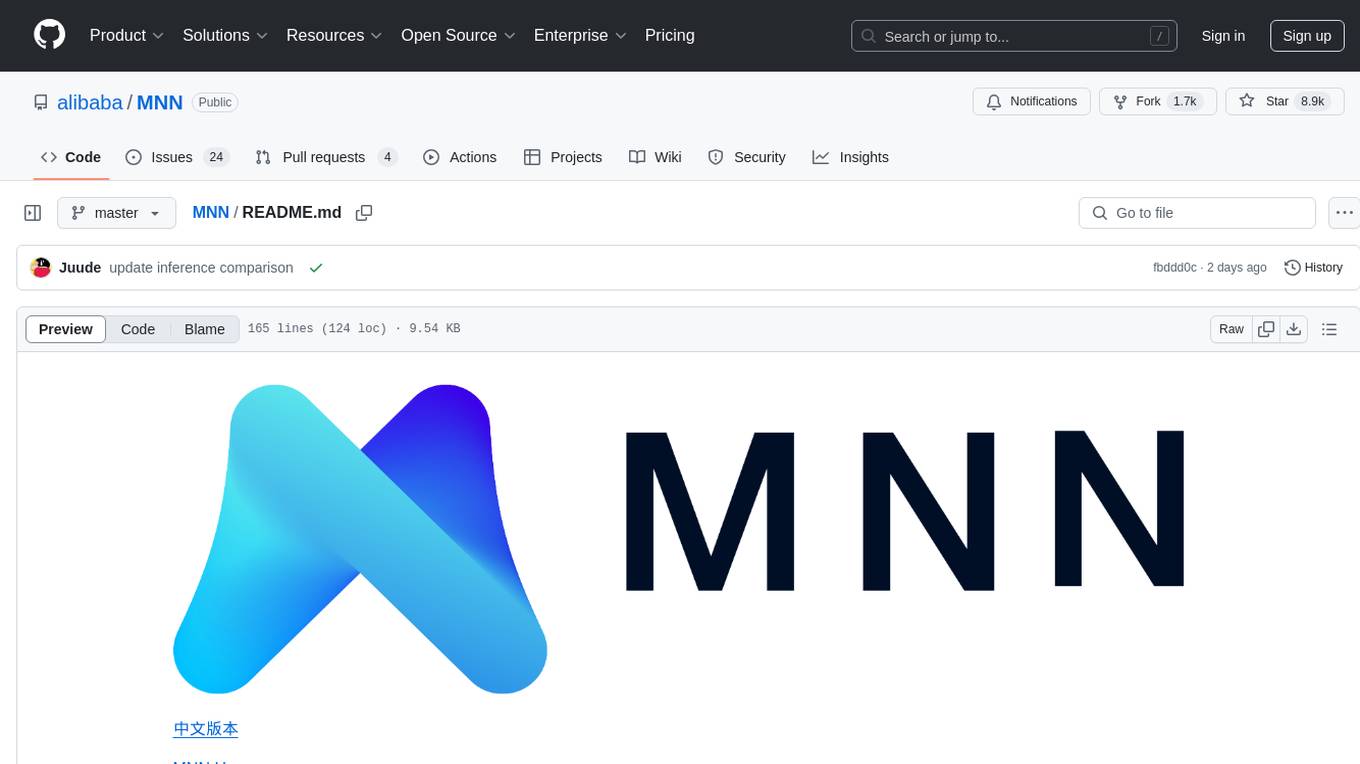
MNN is a highly efficient and lightweight deep learning framework that supports inference and training of deep learning models. It has industry-leading performance for on-device inference and training. MNN has been integrated into various Alibaba Inc. apps and is used in scenarios like live broadcast, short video capture, search recommendation, and product searching by image. It is also utilized on embedded devices such as IoT. MNN-LLM and MNN-Diffusion are specific runtime solutions developed based on the MNN engine for deploying language models and diffusion models locally on different platforms. The framework is optimized for devices, supports various neural networks, and offers high performance with optimized assembly code and GPU support. MNN is versatile, easy to use, and supports hybrid computing on multiple devices.
README:
- [2025/06/11] New App MNN TaoAvatar released, you can talk with 3DAvatar offline with LLM, ASR, TTS, A2BS and NNR models all run local on your device!! MNN TaoAvatar
- [2025/05/30] MNN Chat app support DeepSeek-R1-0528-Qwen3,Qwen3-30B-A3B, SmoVLM and FastVLM MNN Chat App.
- [2025/05/12] android app support qwen2.5 omni 3b and 7b MNN Chat App.
History News
- [2025/04/30] android app support qwen3 and dark mode MNN Chat App.
- [2025/02/18] iOS multimodal LLM App is released MNN LLM iOS.
- [2025/02/11] android app support for deepseek r1 1.5b.
- [2025/01/23] We released our full multimodal LLM Android App:MNN-LLM-Android. including text-to-text, image-to-text, audio-to-text, and text-to-image generation.
MNN is a highly efficient and lightweight deep learning framework. It supports inference and training of deep learning models and has industry-leading performance for inference and training on-device. At present, MNN has been integrated into more than 30 apps of Alibaba Inc, such as Taobao, Tmall, Youku, DingTalk, Xianyu, etc., covering more than 70 usage scenarios such as live broadcast, short video capture, search recommendation, product searching by image, interactive marketing, equity distribution, security risk control. In addition, MNN is also used on embedded devices, such as IoT.
MNN-LLM is a large language model runtime solution developed based on the MNN engine. The mission of this project is to deploy LLM models locally on everyone's platforms(Mobile Phone/PC/IOT). It supports popular large language models such as Qianwen, Baichuan, Zhipu, LLAMA, and others. MNN-LLM User guide
MNN-Diffusion is a stable diffusion model runtime solution developed based on the MNN engine. The mission of this project is to deploy stable diffusion models locally on everyone's platforms. MNN-Diffusion User guide
Inside Alibaba, MNN works as the basic module of the compute container in the Walle System, the first end-to-end, general-purpose, and large-scale production system for device-cloud collaborative machine learning, which has been published in the top system conference OSDI’22. The key design principles of MNN and the extensive benchmark testing results (vs. TensorFlow, TensorFlow Lite, PyTorch, PyTorch Mobile, TVM) can be found in the OSDI paper. The scripts and instructions for benchmark testing are put in the path “/benchmark”. If MNN or the design of Walle helps your research or production use, please cite our OSDI paper as follows:
@inproceedings {proc:osdi22:walle,
author = {Chengfei Lv and Chaoyue Niu and Renjie Gu and Xiaotang Jiang and Zhaode Wang and Bin Liu and Ziqi Wu and Qiulin Yao and Congyu Huang and Panos Huang and Tao Huang and Hui Shu and Jinde Song and Bin Zou and Peng Lan and Guohuan Xu and Fei Wu and Shaojie Tang and Fan Wu and Guihai Chen},
title = {Walle: An {End-to-End}, {General-Purpose}, and {Large-Scale} Production System for {Device-Cloud} Collaborative Machine Learning},
booktitle = {16th USENIX Symposium on Operating Systems Design and Implementation (OSDI 22)},
year = {2022},
isbn = {978-1-939133-28-1},
address = {Carlsbad, CA},
pages = {249--265},
url = {https://www.usenix.org/conference/osdi22/presentation/lv},
publisher = {USENIX Association},
month = jul,
}
MNN's docs are in place in Read the docs.
You can also read docs/README to build docs's html.
MNN Workbench could be downloaded from MNN's homepage, which provides pretrained models, visualized training tools, and one-click deployment of models to devices.
- Optimized for devices, no dependencies, can be easily deployed to mobile devices and a variety of embedded devices.
- iOS platform: static library size will full option for armv7+arm64 platforms is about 12MB, size increase of linked executables is about 2M.
- Android platform: core so size is about 800KB (armv7a - c++_shared).
- Using MNN_BUILD_MINI can reduce package size by about 25%, with a limit of fixed model input size
- Support FP16 / Int8 quantize, can reduce model size 50%-70%
- Supports
Tensorflow,Caffe,ONNX,Torchscriptsand supports common neural networks such asCNN,RNN,GAN,Transformer. - Supports AI model with multi-inputs or multi-outputs, every kind of dimension format, dynamic inputs, controlflow.
- MNN supports approximate full OPs used for the AI Model. The converter supports 178
TensorflowOPs, 52CaffeOPs, 163TorchscriptsOPs, 158ONNXOPs. - Supports iOS 8.0+, Android 4.3+, and embedded devices with POSIX interface.
- Supports hybrid computing on multiple devices. Currently supports CPU and GPU.
- Implements core computing with lots of optimized assembly code to make full use of the ARM / x64 CPU.
- Use Metal / OpenCL / Vulkan to support GPU inference on mobile.
- Use CUDA and tensorcore to support NVIDIA GPU for better performance
- Convolution and transposition convolution algorithms are efficient and stable. The Winograd convolution algorithm is widely used to better symmetric convolutions such as 3x3,4x4,5x5,6x6,7x7.
- Twice speed increase for the new architecture ARM v8.2 with FP16 half-precision calculation support. 2.5 faster to use sdot for ARM v8.2 and VNNI.
- Support use MNN's OP to do numerical calculating like numpy.
- Support lightweight image process module like OpenCV, which is only 100k.
- Support build model and train it on PC / mobile.
- MNN Python API helps ML engineers to easily use MNN to infer, train, and process images, without dipping their toes in C++ code.
The Architecture / Precision MNN supported is shown below:
- S :Support and work well, deeply optimized, recommend to use
- A :Support and work well, can use
- B :Support but has bug or not optimized, no recommend to use
- C :Not Support
| Architecture / Precision | Normal | FP16 | BF16 | Int8 | |
|---|---|---|---|---|---|
| CPU | Native | B | C | B | B |
| x86/x64-SSE4.1 | A | C | C | A | |
| x86/x64-AVX2 | S | C | C | A | |
| x86/x64-AVX512 | S | C | C | S | |
| ARMv7a | S | S (ARMv8.2) | S | S | |
| ARMv8 | S | S (ARMv8.2) | S(ARMv8.6) | S | |
| GPU | OpenCL | A | S | C | S |
| Vulkan | A | A | C | A | |
| Metal | A | S | C | S | |
| CUDA | A | S | C | A | |
| NPU | CoreML | A | C | C | C |
| HIAI | A | C | C | C | |
| NNAPI | B | B | C | B | |
| QNN | C | B | C | C |
Base on MNN (Tensor compute engine), we provided a series of tools for inference, train and general computation.
- MNN-Converter: Convert other models to MNN models for inference, such as Tensorflow(lite), Caffe, ONNX, Torchscripts. And do graph optimization to reduce computation.
- MNN-Compress: Compress model to reduce size and increase performance / speed
- MNN-Express: Support model with controlflow, use MNN's OP to do general-purpose computing.
- MNN-CV: An OpenCV-like library, but based on MNN and then much more lightweight.
- MNN-Train: Support train MNN model.
The group discussions are predominantly Chinese. But we welcome and will help English speakers.
Dingtalk discussion groups:
Group #1 (Full): 23329087
Group #2 (Full): 23350225
Group #3: QR code:
The preliminary version of MNN, as mobile inference engine and with the focus on manual optimization, has also been published in MLSys 2020. Please cite the paper, if MNN previously helped your research:
@inproceedings{alibaba2020mnn,
author = {Jiang, Xiaotang and Wang, Huan and Chen, Yiliu and Wu, Ziqi and Wang, Lichuan and Zou, Bin and Yang, Yafeng and Cui, Zongyang and Cai, Yu and Yu, Tianhang and Lv, Chengfei and Wu, Zhihua},
title = {MNN: A Universal and Efficient Inference Engine},
booktitle = {MLSys},
year = {2020}
}
Apache 2.0
MNN participants: Taobao Technology Department, Search Engineering Team, DAMO Team, Youku and other Alibaba Group employees.
MNN refers to the following projects:
For Tasks:
Click tags to check more tools for each tasksFor Jobs:
Alternative AI tools for MNN
Similar Open Source Tools

MNN
MNN is a highly efficient and lightweight deep learning framework that supports inference and training of deep learning models. It has industry-leading performance for on-device inference and training. MNN has been integrated into various Alibaba Inc. apps and is used in scenarios like live broadcast, short video capture, search recommendation, and product searching by image. It is also utilized on embedded devices such as IoT. MNN-LLM and MNN-Diffusion are specific runtime solutions developed based on the MNN engine for deploying language models and diffusion models locally on different platforms. The framework is optimized for devices, supports various neural networks, and offers high performance with optimized assembly code and GPU support. MNN is versatile, easy to use, and supports hybrid computing on multiple devices.
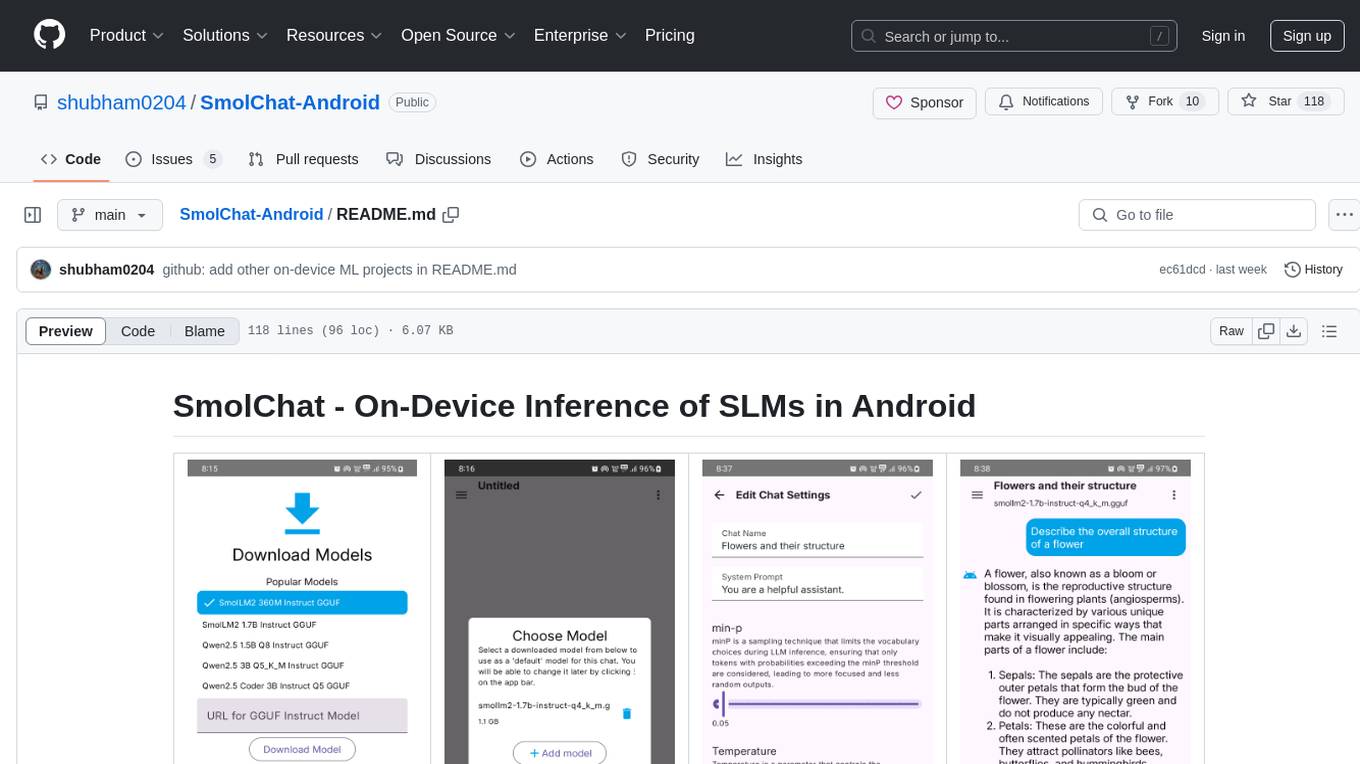
SmolChat-Android
SmolChat-Android is a mobile application that enables users to interact with local small language models (SLMs) on-device. Users can add/remove SLMs, modify system prompts and inference parameters, create downstream tasks, and generate responses. The app uses llama.cpp for model execution, ObjectBox for database storage, and Markwon for markdown rendering. It provides a simple, extensible codebase for on-device machine learning projects.
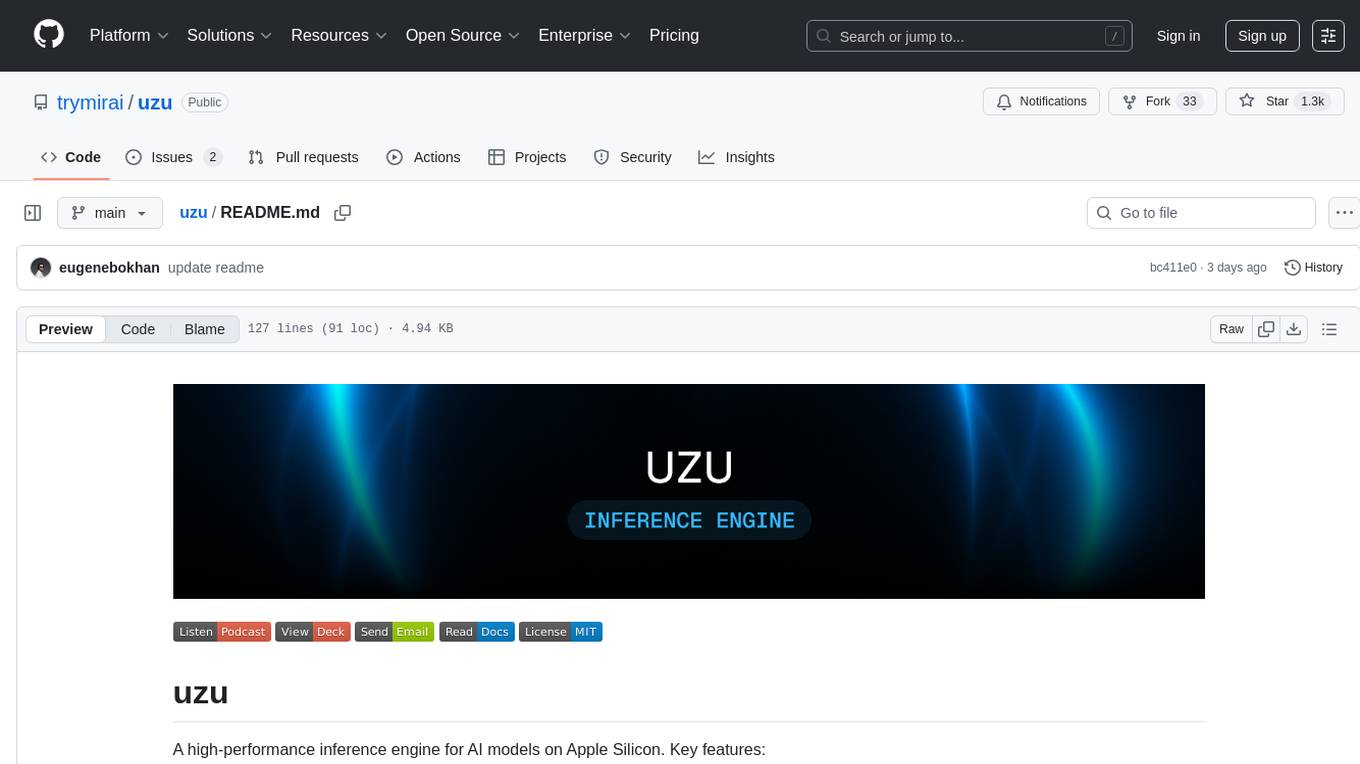
uzu
uzu is a high-performance inference engine for AI models on Apple Silicon. It features a simple, high-level API, hybrid architecture for GPU kernel computation, unified model configurations, traceable computations, and utilizes unified memory on Apple devices. The tool provides a CLI mode for running models, supports its own model format, and offers prebuilt Swift and TypeScript frameworks for bindings. Users can quickly start by adding the uzu dependency to their Cargo.toml and creating an inference Session with a specific model and configuration. Performance benchmarks show metrics for various models on Apple M2, highlighting the tokens/s speed for each model compared to llama.cpp with bf16/f16 precision.
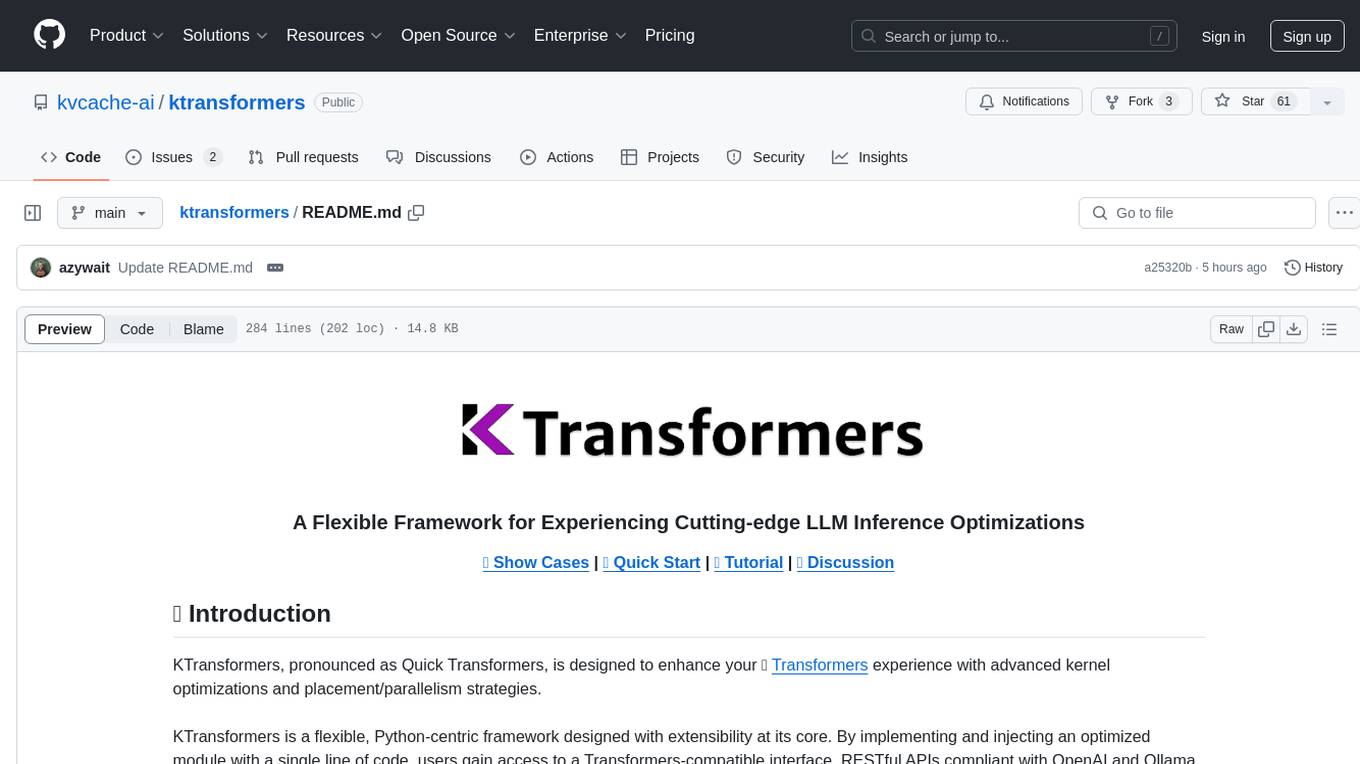
ktransformers
KTransformers is a flexible Python-centric framework designed to enhance the user's experience with advanced kernel optimizations and placement/parallelism strategies for Transformers. It provides a Transformers-compatible interface, RESTful APIs compliant with OpenAI and Ollama, and a simplified ChatGPT-like web UI. The framework aims to serve as a platform for experimenting with innovative LLM inference optimizations, focusing on local deployments constrained by limited resources and supporting heterogeneous computing opportunities like GPU/CPU offloading of quantized models.
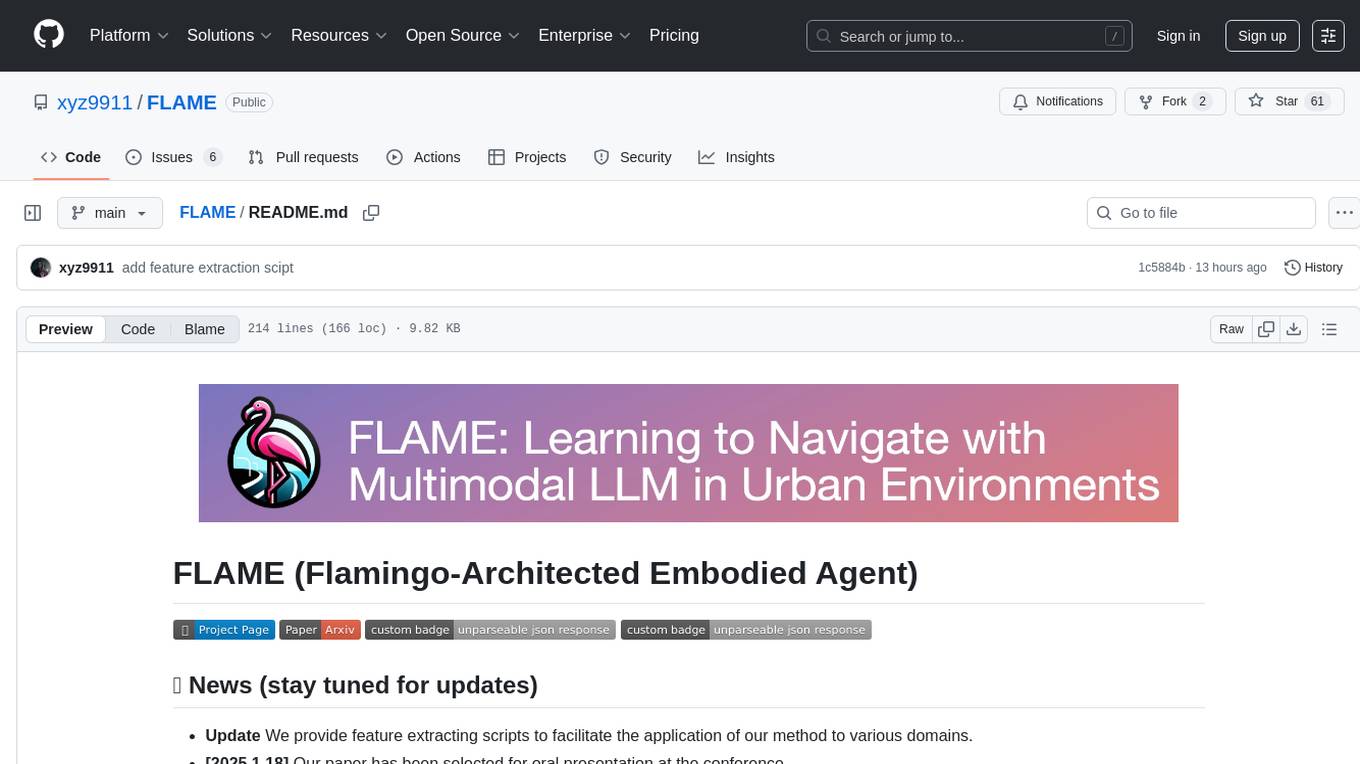
FLAME
FLAME is a lightweight and efficient deep learning framework designed for edge devices. It provides a simple and user-friendly interface for developing and deploying deep learning models on resource-constrained devices. With FLAME, users can easily build and optimize neural networks for tasks such as image classification, object detection, and natural language processing. The framework supports various neural network architectures and optimization techniques, making it suitable for a wide range of applications in the field of edge computing.
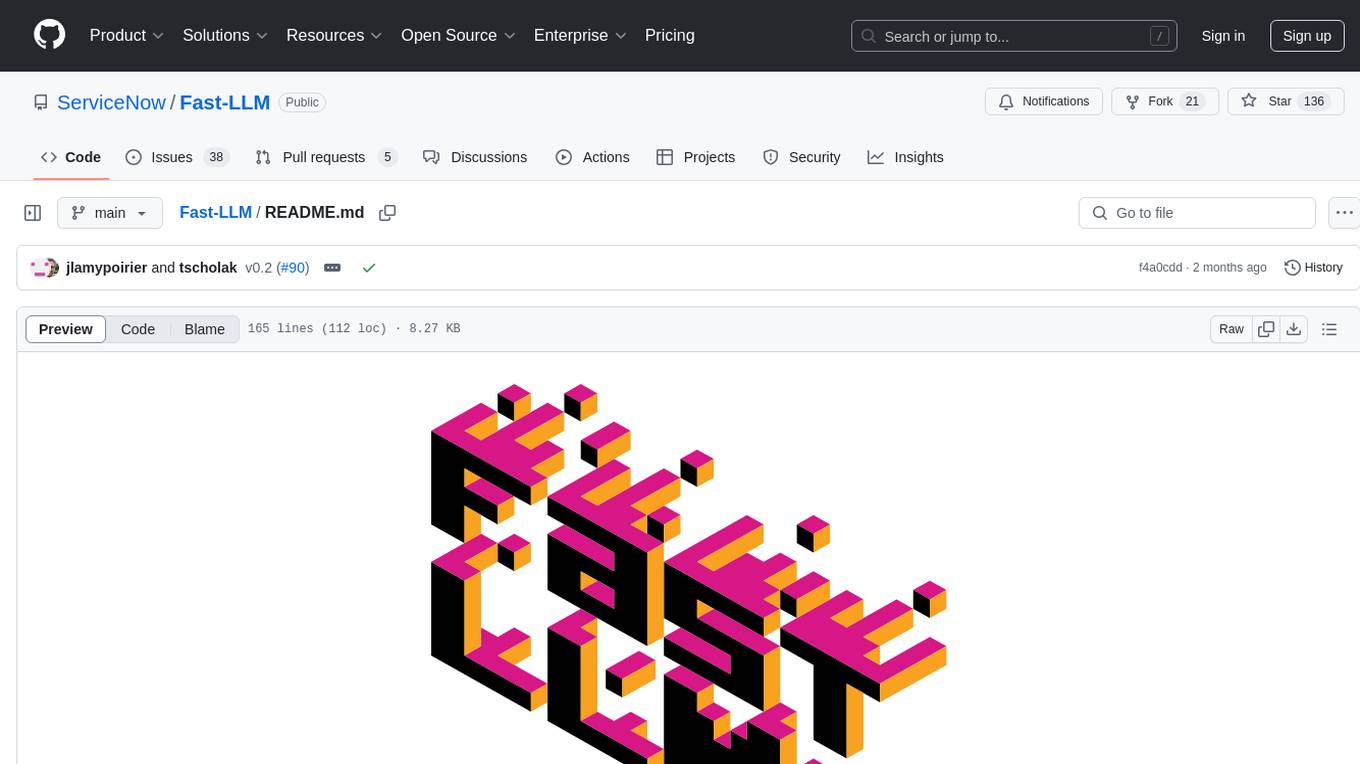
Fast-LLM
Fast-LLM is an open-source library designed for training large language models with exceptional speed, scalability, and flexibility. Built on PyTorch and Triton, it offers optimized kernel efficiency, reduced overheads, and memory usage, making it suitable for training models of all sizes. The library supports distributed training across multiple GPUs and nodes, offers flexibility in model architectures, and is easy to use with pre-built Docker images and simple configuration. Fast-LLM is licensed under Apache 2.0, developed transparently on GitHub, and encourages contributions and collaboration from the community.
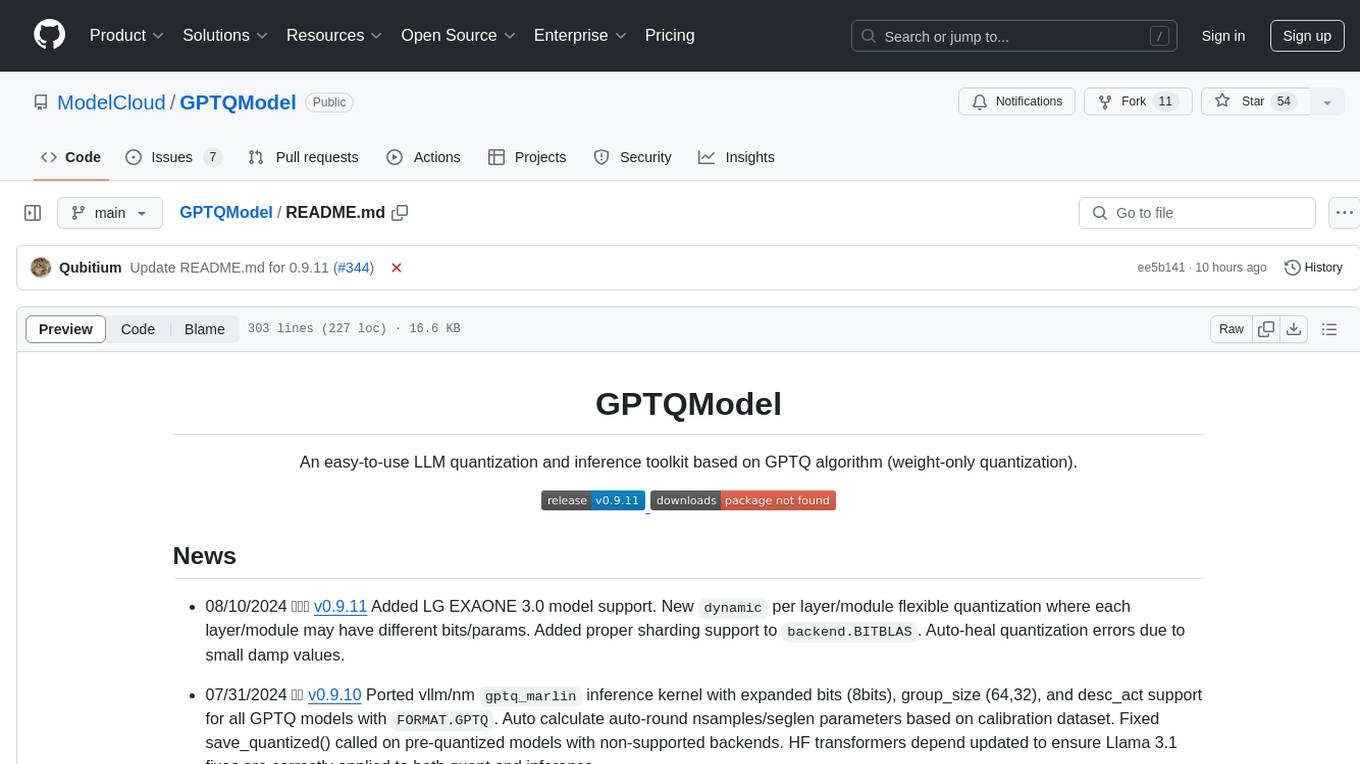
GPTQModel
GPTQModel is an easy-to-use LLM quantization and inference toolkit based on the GPTQ algorithm. It provides support for weight-only quantization and offers features such as dynamic per layer/module flexible quantization, sharding support, and auto-heal quantization errors. The toolkit aims to ensure inference compatibility with HF Transformers, vLLM, and SGLang. It offers various model supports, faster quant inference, better quality quants, and security features like hash check of model weights. GPTQModel also focuses on faster quantization, improved quant quality as measured by PPL, and backports bug fixes from AutoGPTQ.
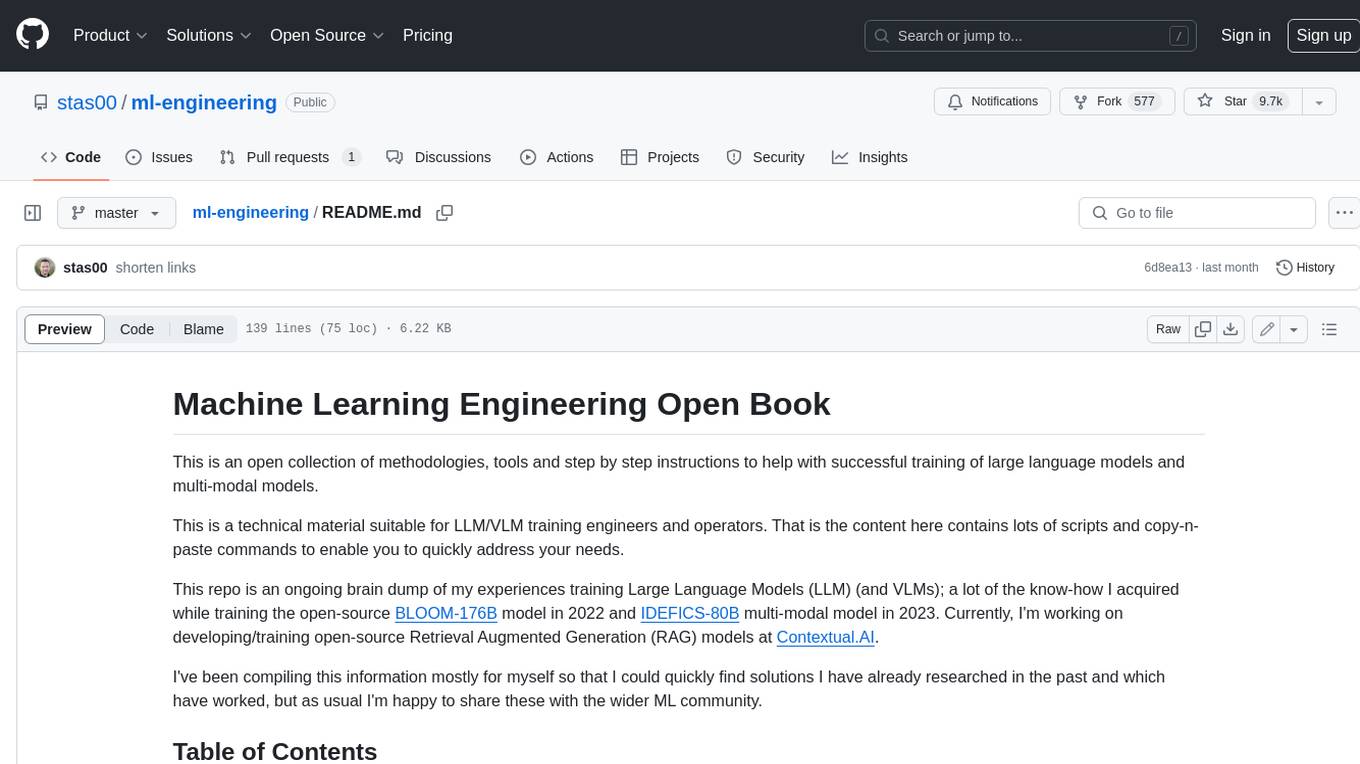
ml-engineering
This repository provides a comprehensive collection of methodologies, tools, and step-by-step instructions for successful training of large language models (LLMs) and multi-modal models. It is a technical resource suitable for LLM/VLM training engineers and operators, containing numerous scripts and copy-n-paste commands to facilitate quick problem-solving. The repository is an ongoing compilation of the author's experiences training BLOOM-176B and IDEFICS-80B models, and currently focuses on the development and training of Retrieval Augmented Generation (RAG) models at Contextual.AI. The content is organized into six parts: Insights, Hardware, Orchestration, Training, Development, and Miscellaneous. It includes key comparison tables for high-end accelerators and networks, as well as shortcuts to frequently needed tools and guides. The repository is open to contributions and discussions, and is licensed under Attribution-ShareAlike 4.0 International.
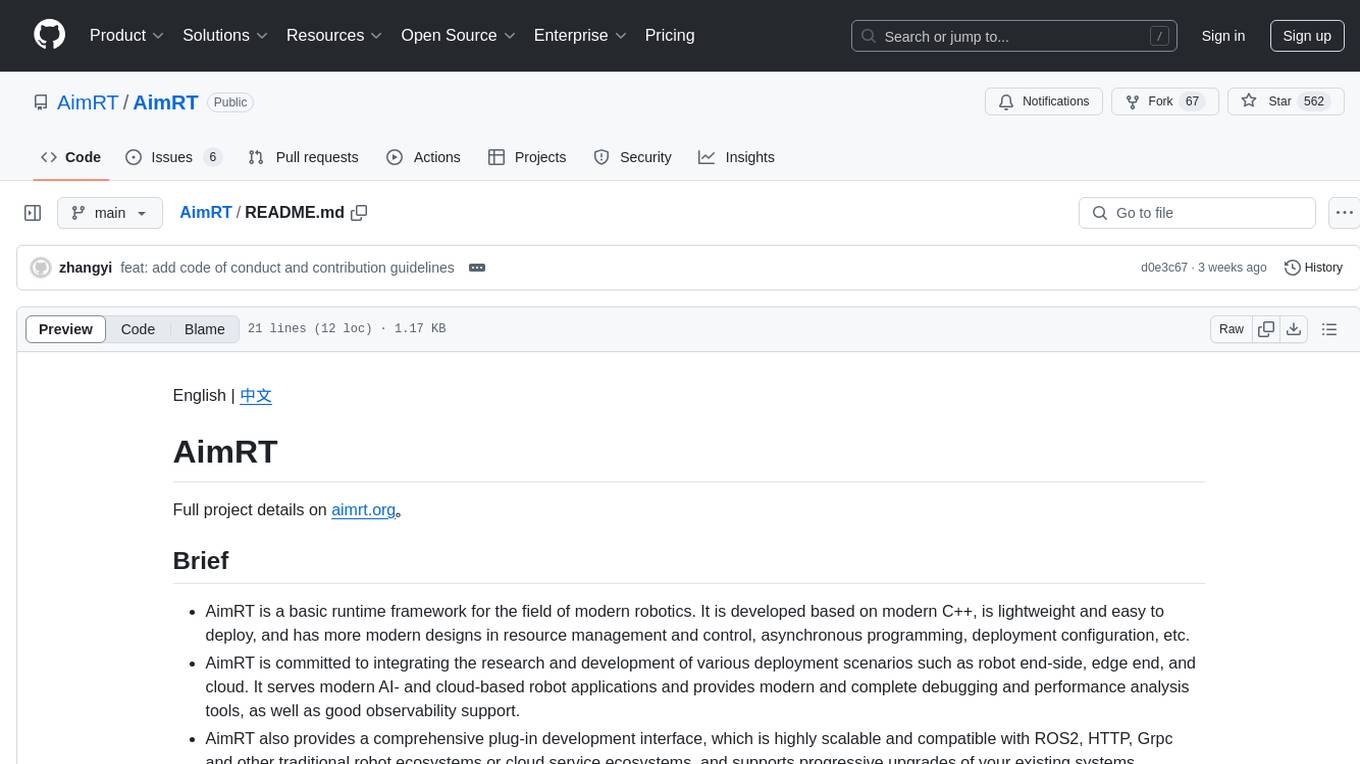
AimRT
AimRT is a basic runtime framework for modern robotics, developed in modern C++ with lightweight and easy deployment. It integrates research and development for robot applications in various deployment scenarios, providing debugging tools and observability support. AimRT offers a plug-in development interface compatible with ROS2, HTTP, Grpc, and other ecosystems for progressive system upgrades.
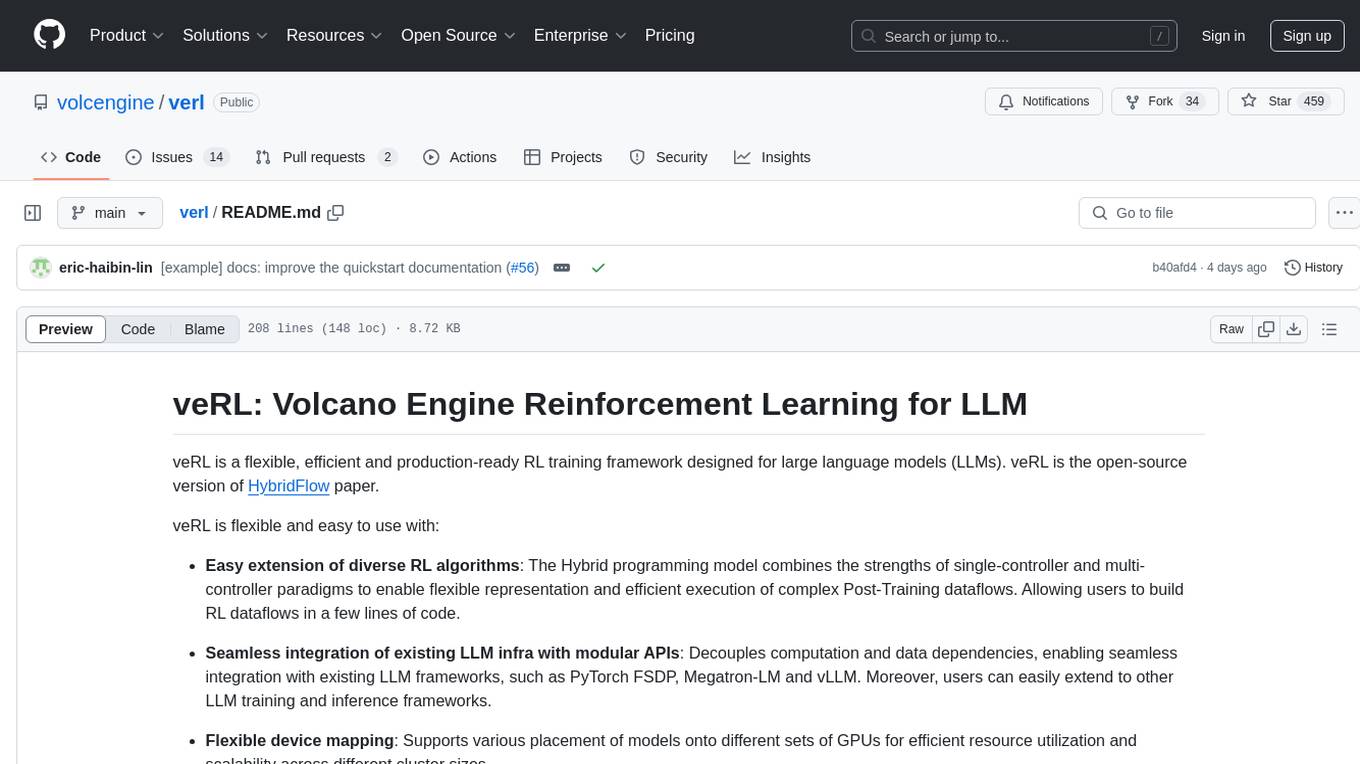
verl
veRL is a flexible and efficient reinforcement learning training framework designed for large language models (LLMs). It allows easy extension of diverse RL algorithms, seamless integration with existing LLM infrastructures, and flexible device mapping. The framework achieves state-of-the-art throughput and efficient actor model resharding with 3D-HybridEngine. It supports popular HuggingFace models and is suitable for users working with PyTorch FSDP, Megatron-LM, and vLLM backends.
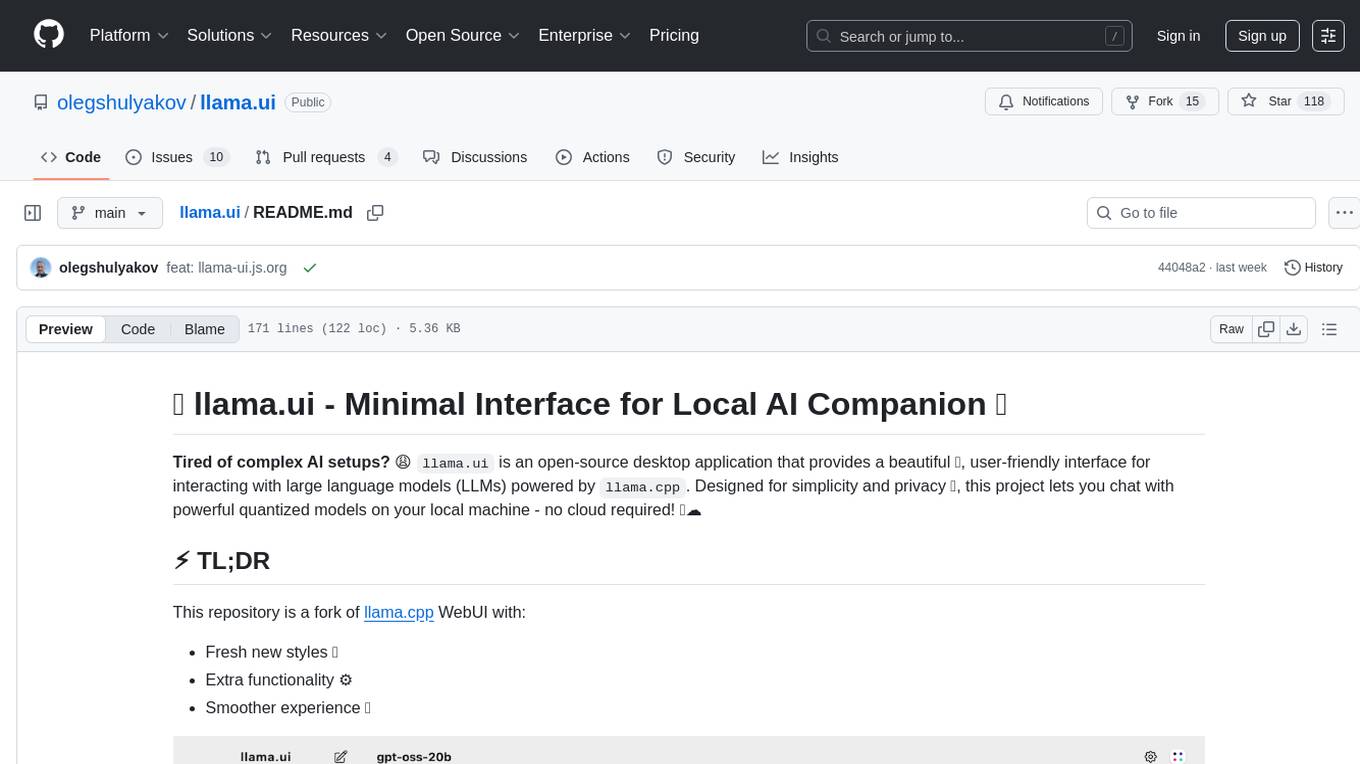
llama.ui
llama.ui is an open-source desktop application that provides a beautiful, user-friendly interface for interacting with large language models powered by llama.cpp. It is designed for simplicity and privacy, allowing users to chat with powerful quantized models on their local machine without the need for cloud services. The project offers multi-provider support, conversation management with indexedDB storage, rich UI components including markdown rendering and file attachments, advanced features like PWA support and customizable generation parameters, and is privacy-focused with all data stored locally in the browser.
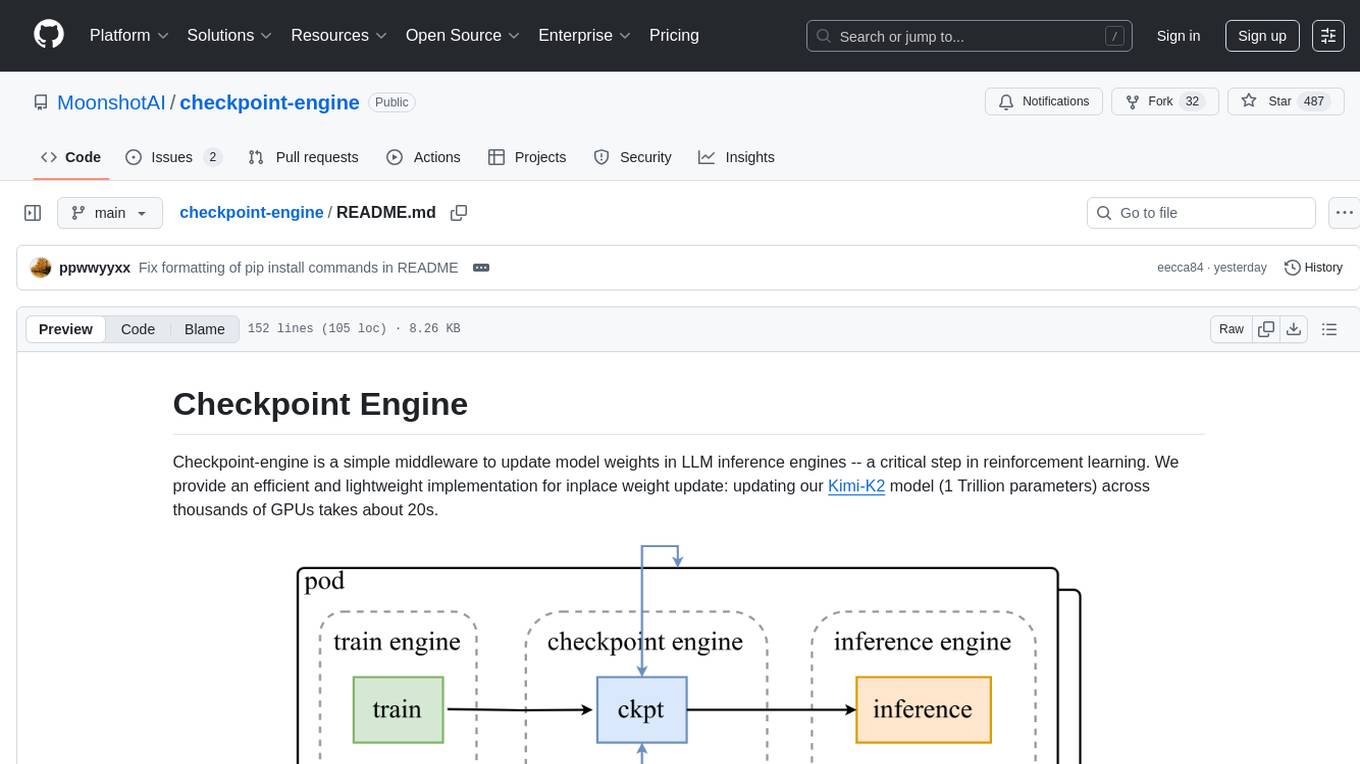
checkpoint-engine
Checkpoint-engine is a middleware tool designed for updating model weights in LLM inference engines efficiently. It provides implementations for both Broadcast and P2P weight update methods, orchestrating the transfer process and controlling the inference engine through ZeroMQ socket. The tool optimizes weight broadcast by arranging data transfer into stages and organizing transfers into a pipeline for performance. It supports flexible installation options and is tested with various models and device setups. Checkpoint-engine also allows reusing weights from existing instances and provides a patch for FP8 quantization in vLLM.
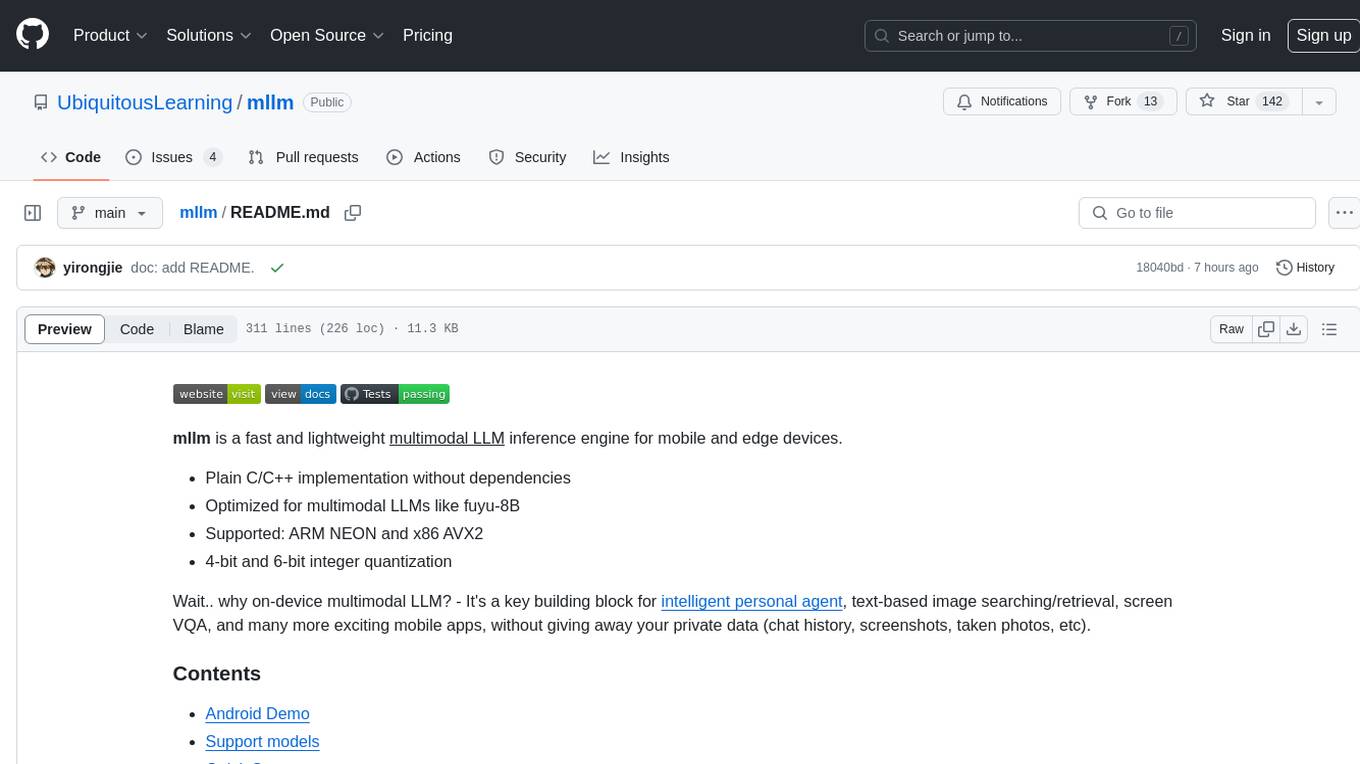
mllm
mllm is a fast and lightweight multimodal LLM inference engine for mobile and edge devices. It is a Plain C/C++ implementation without dependencies, optimized for multimodal LLMs like fuyu-8B, and supports ARM NEON and x86 AVX2. The engine offers 4-bit and 6-bit integer quantization, making it suitable for intelligent personal agents, text-based image searching/retrieval, screen VQA, and various mobile applications without compromising user privacy.
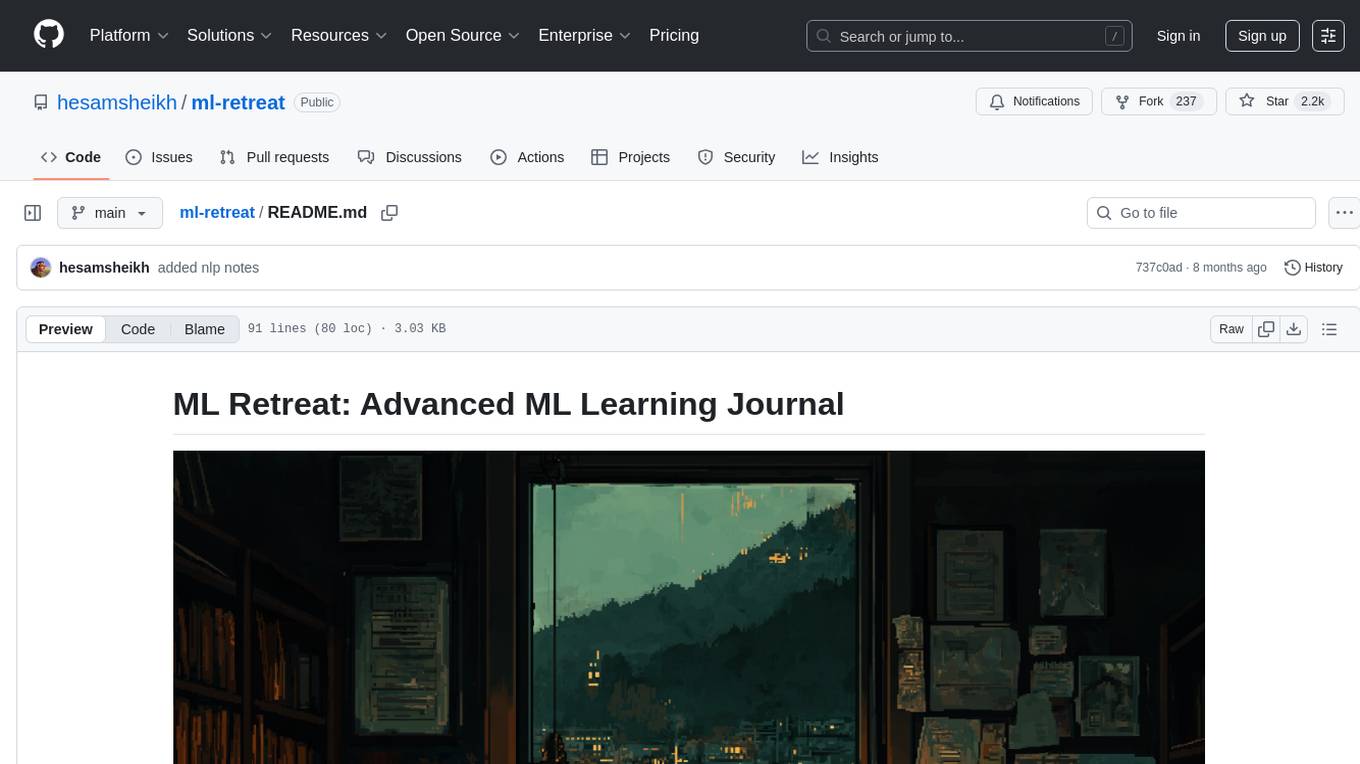
ml-retreat
ML-Retreat is a comprehensive machine learning library designed to simplify and streamline the process of building and deploying machine learning models. It provides a wide range of tools and utilities for data preprocessing, model training, evaluation, and deployment. With ML-Retreat, users can easily experiment with different algorithms, hyperparameters, and feature engineering techniques to optimize their models. The library is built with a focus on scalability, performance, and ease of use, making it suitable for both beginners and experienced machine learning practitioners.
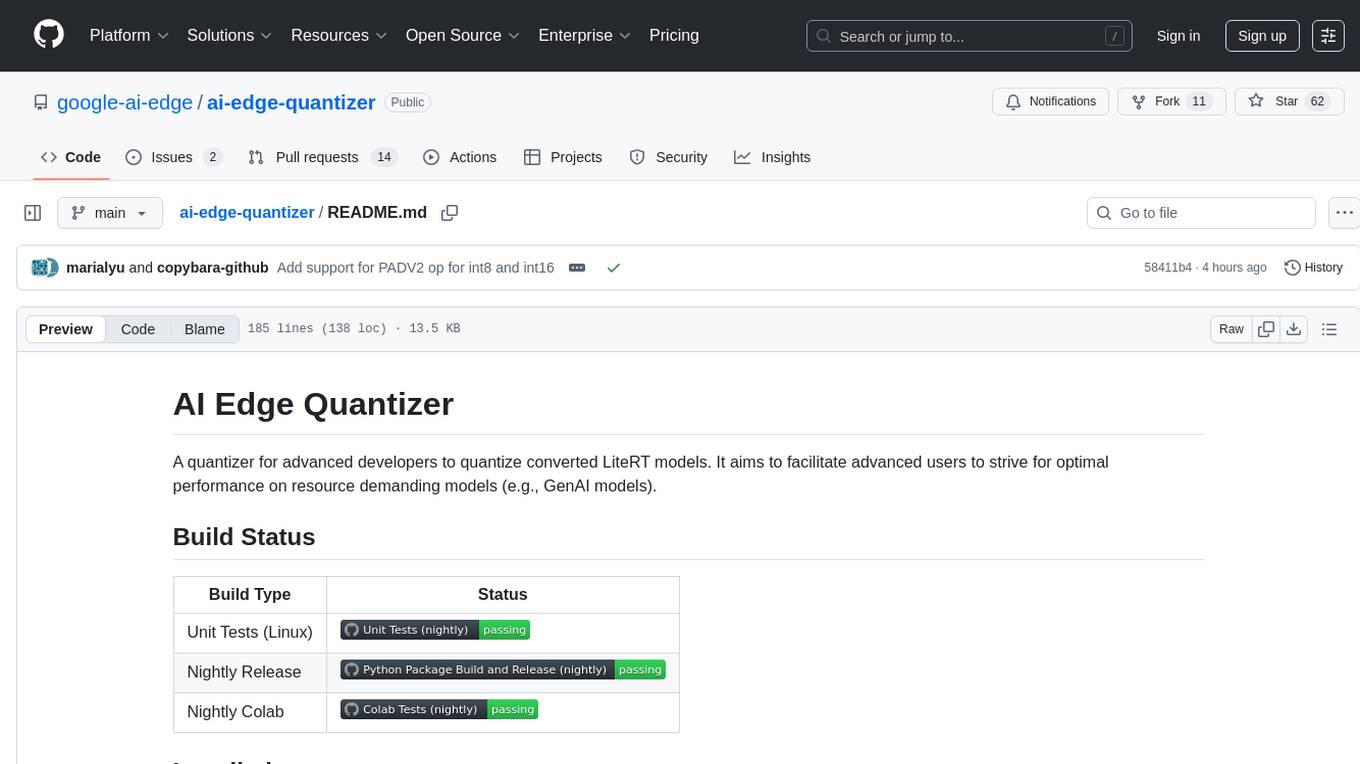
ai-edge-quantizer
AI Edge Quantizer is a tool designed for advanced developers to quantize converted LiteRT models. It aims to optimize performance on resource-demanding models by providing quantization recipes for edge device deployment. The tool supports dynamic quantization, weight-only quantization, and static quantization methods, allowing users to customize the quantization process for different hardware deployments. Users can specify quantization recipes to apply to source models, resulting in quantized LiteRT models ready for deployment. The tool also includes advanced features such as selective quantization and mixed precision schemes for fine-tuning quantization recipes.
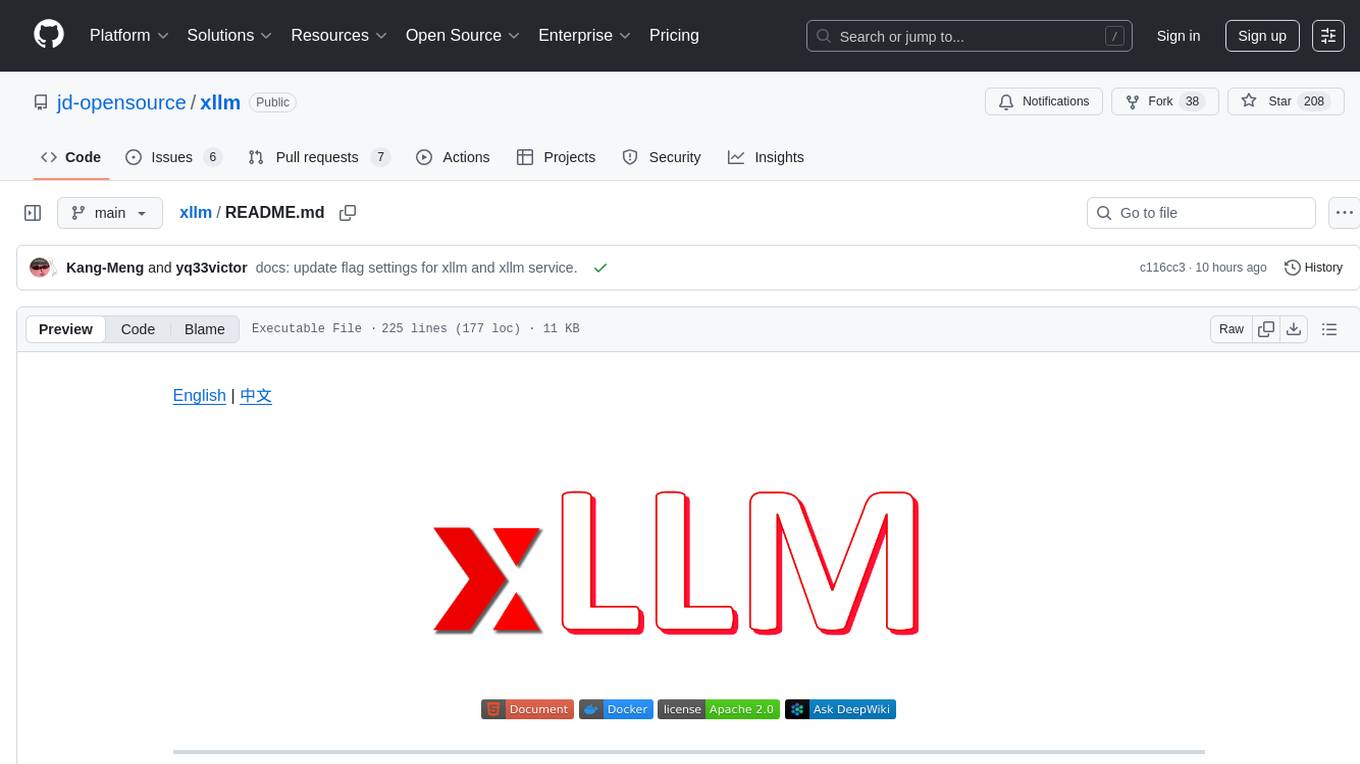
xllm
xLLM is an efficient LLM inference framework optimized for Chinese AI accelerators, enabling enterprise-grade deployment with enhanced efficiency and reduced cost. It adopts a service-engine decoupled inference architecture, achieving breakthrough efficiency through technologies like elastic scheduling, dynamic PD disaggregation, multi-stream parallel computing, graph fusion optimization, and global KV cache management. xLLM supports deployment of mainstream large models on Chinese AI accelerators, empowering enterprises in scenarios like intelligent customer service, risk control, supply chain optimization, ad recommendation, and more.
For similar tasks
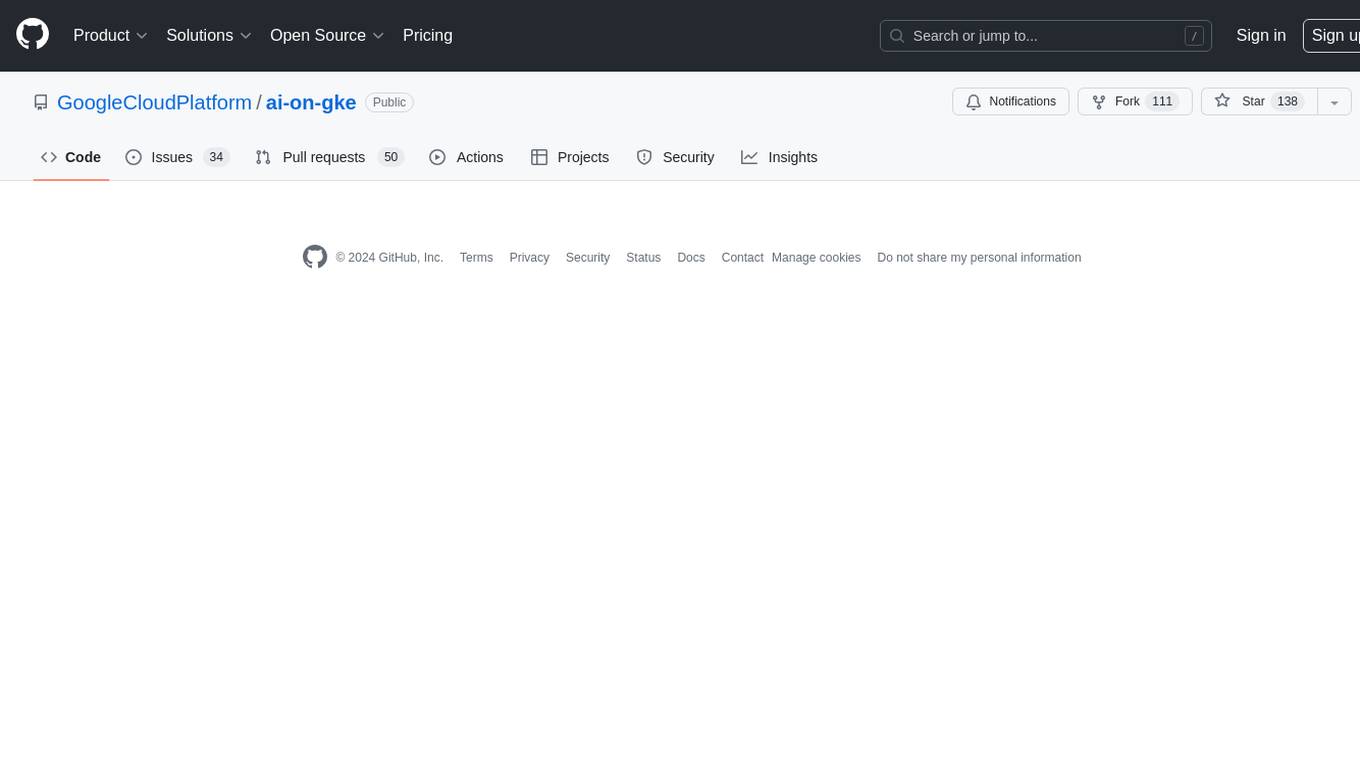
ai-on-gke
This repository contains assets related to AI/ML workloads on Google Kubernetes Engine (GKE). Run optimized AI/ML workloads with Google Kubernetes Engine (GKE) platform orchestration capabilities. A robust AI/ML platform considers the following layers: Infrastructure orchestration that support GPUs and TPUs for training and serving workloads at scale Flexible integration with distributed computing and data processing frameworks Support for multiple teams on the same infrastructure to maximize utilization of resources
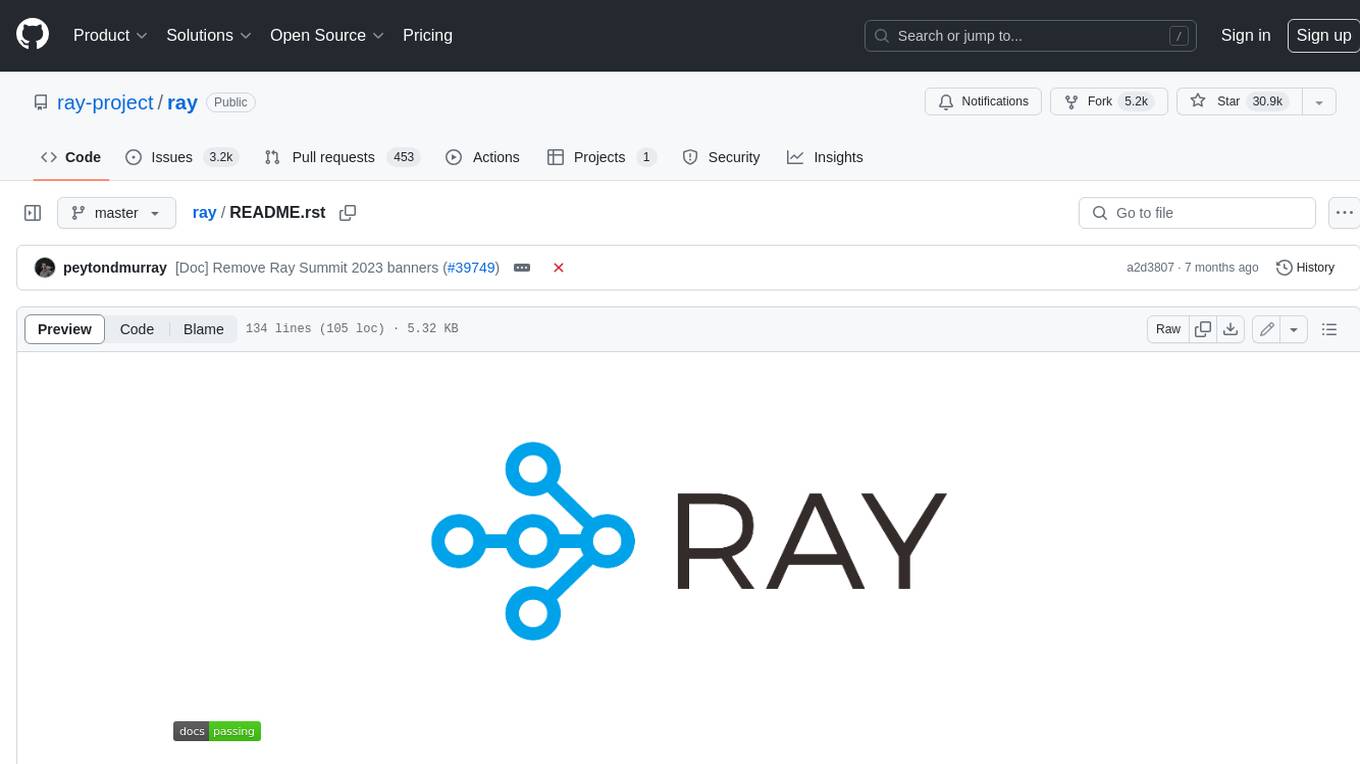
ray
Ray is a unified framework for scaling AI and Python applications. It consists of a core distributed runtime and a set of AI libraries for simplifying ML compute, including Data, Train, Tune, RLlib, and Serve. Ray runs on any machine, cluster, cloud provider, and Kubernetes, and features a growing ecosystem of community integrations. With Ray, you can seamlessly scale the same code from a laptop to a cluster, making it easy to meet the compute-intensive demands of modern ML workloads.
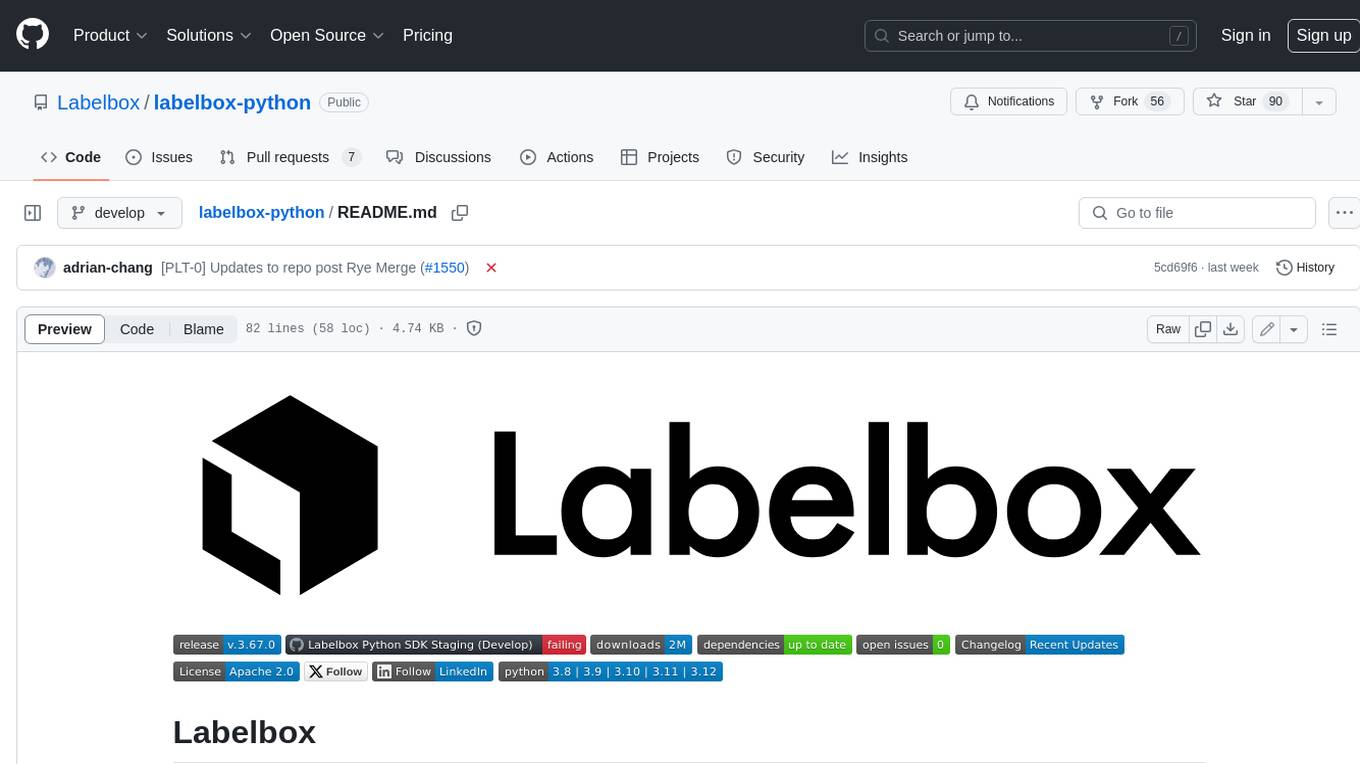
labelbox-python
Labelbox is a data-centric AI platform for enterprises to develop, optimize, and use AI to solve problems and power new products and services. Enterprises use Labelbox to curate data, generate high-quality human feedback data for computer vision and LLMs, evaluate model performance, and automate tasks by combining AI and human-centric workflows. The academic & research community uses Labelbox for cutting-edge AI research.
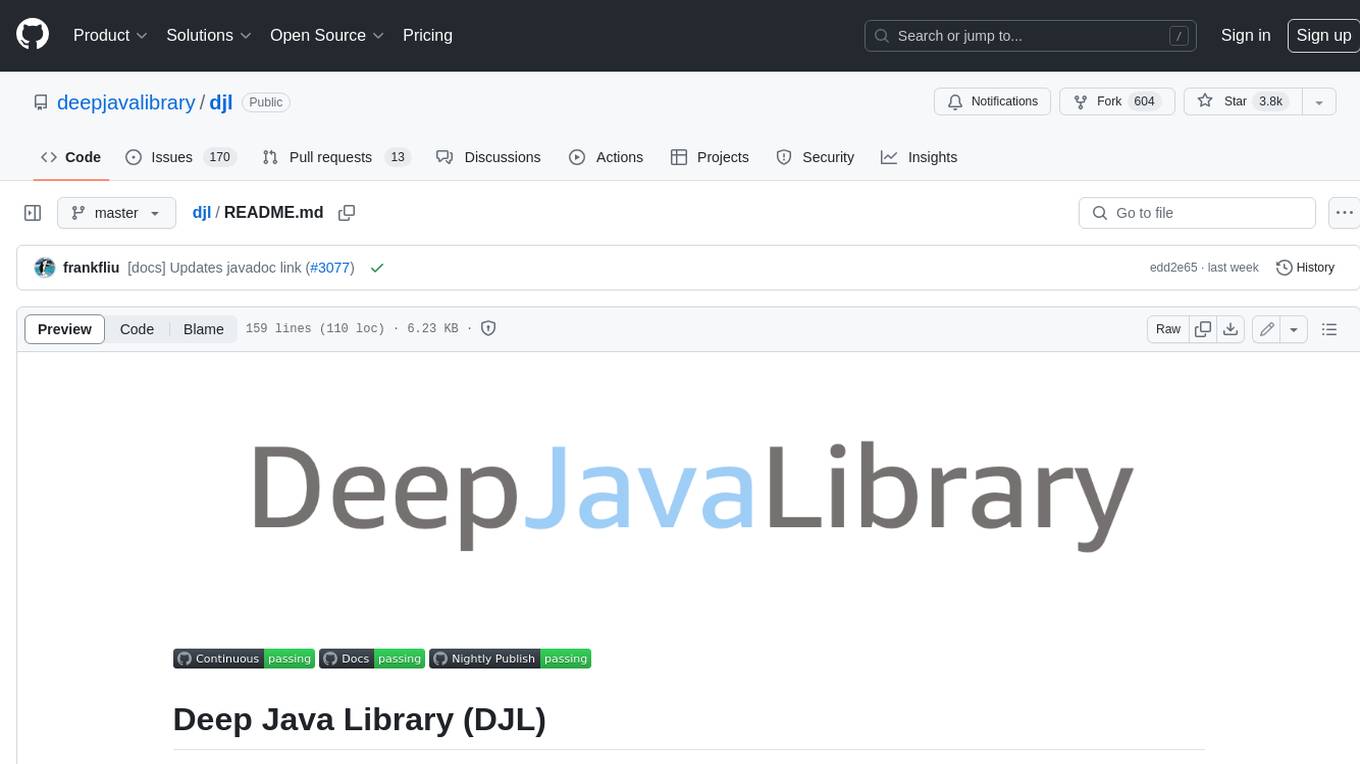
djl
Deep Java Library (DJL) is an open-source, high-level, engine-agnostic Java framework for deep learning. It is designed to be easy to get started with and simple to use for Java developers. DJL provides a native Java development experience and allows users to integrate machine learning and deep learning models with their Java applications. The framework is deep learning engine agnostic, enabling users to switch engines at any point for optimal performance. DJL's ergonomic API interface guides users with best practices to accomplish deep learning tasks, such as running inference and training neural networks.
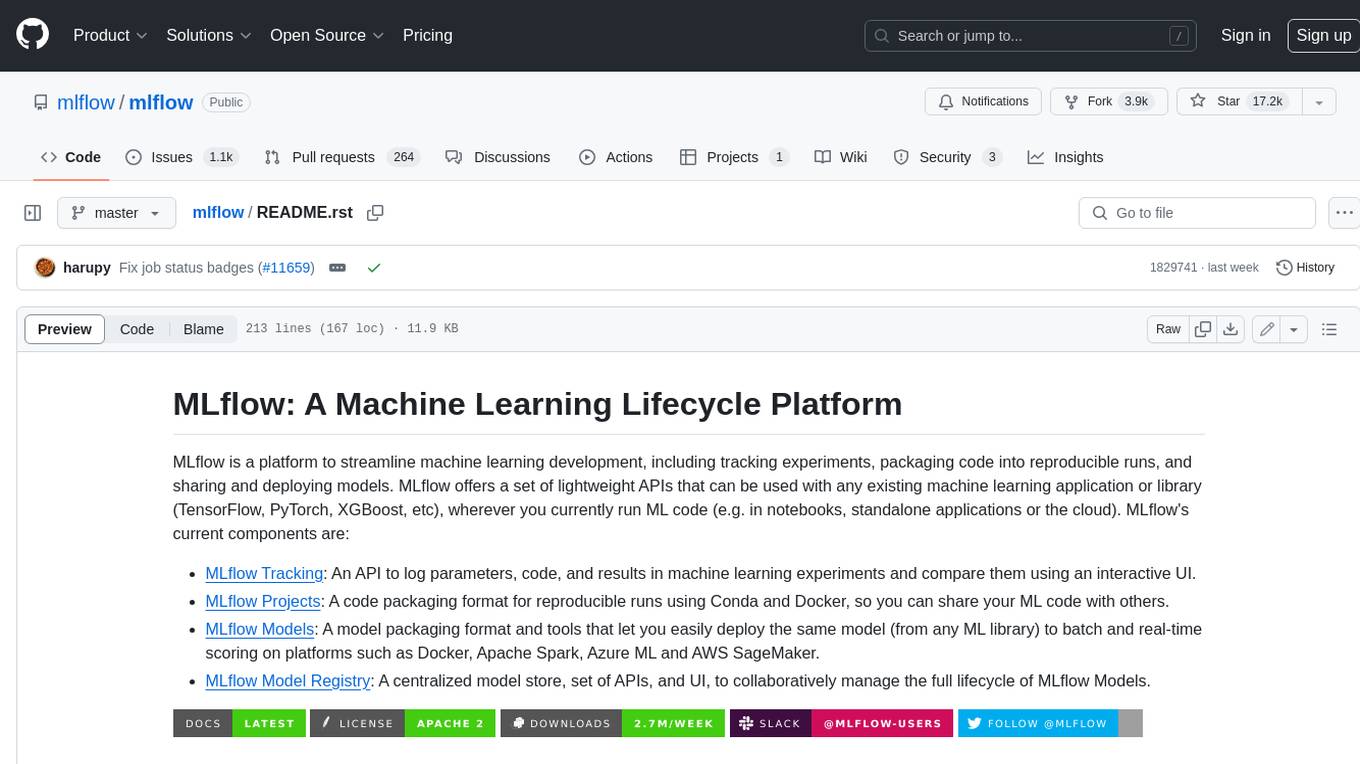
mlflow
MLflow is a platform to streamline machine learning development, including tracking experiments, packaging code into reproducible runs, and sharing and deploying models. MLflow offers a set of lightweight APIs that can be used with any existing machine learning application or library (TensorFlow, PyTorch, XGBoost, etc), wherever you currently run ML code (e.g. in notebooks, standalone applications or the cloud). MLflow's current components are:
* `MLflow Tracking
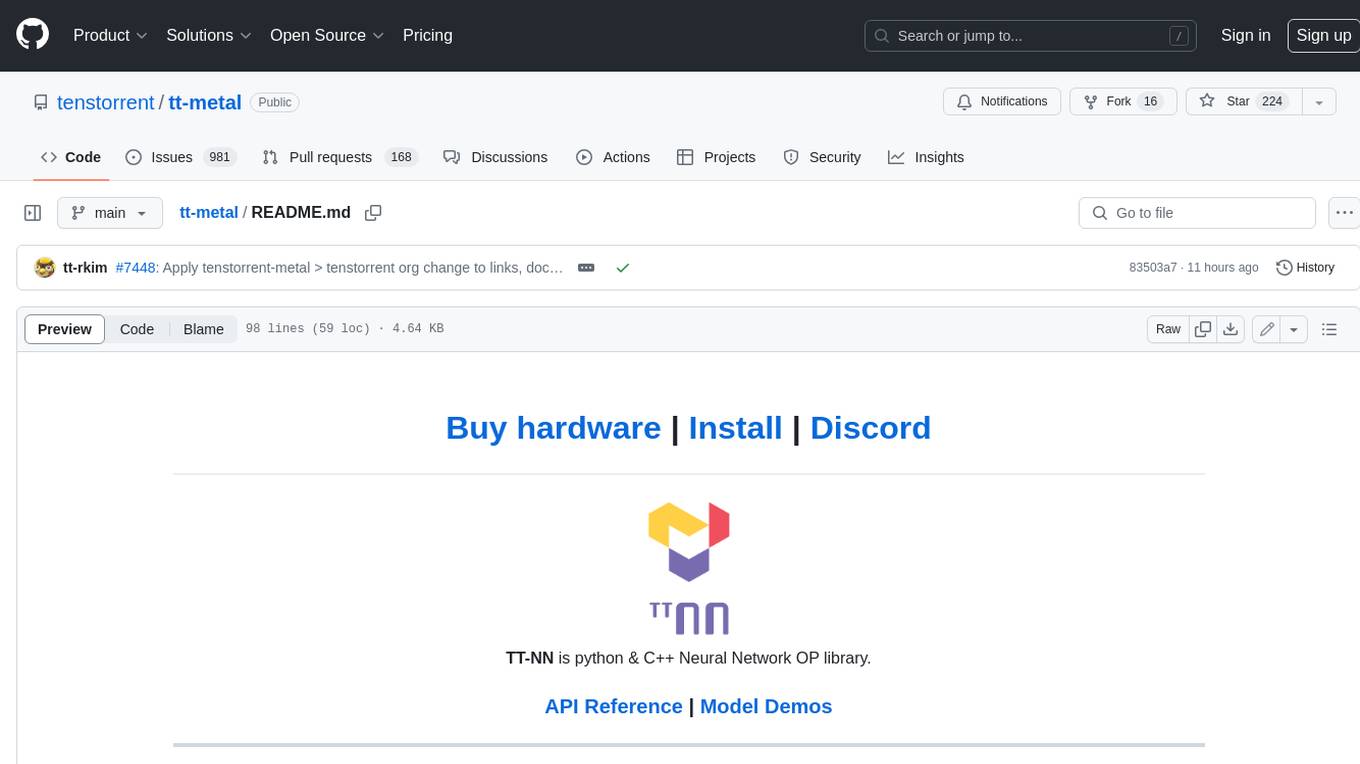
tt-metal
TT-NN is a python & C++ Neural Network OP library. It provides a low-level programming model, TT-Metalium, enabling kernel development for Tenstorrent hardware.
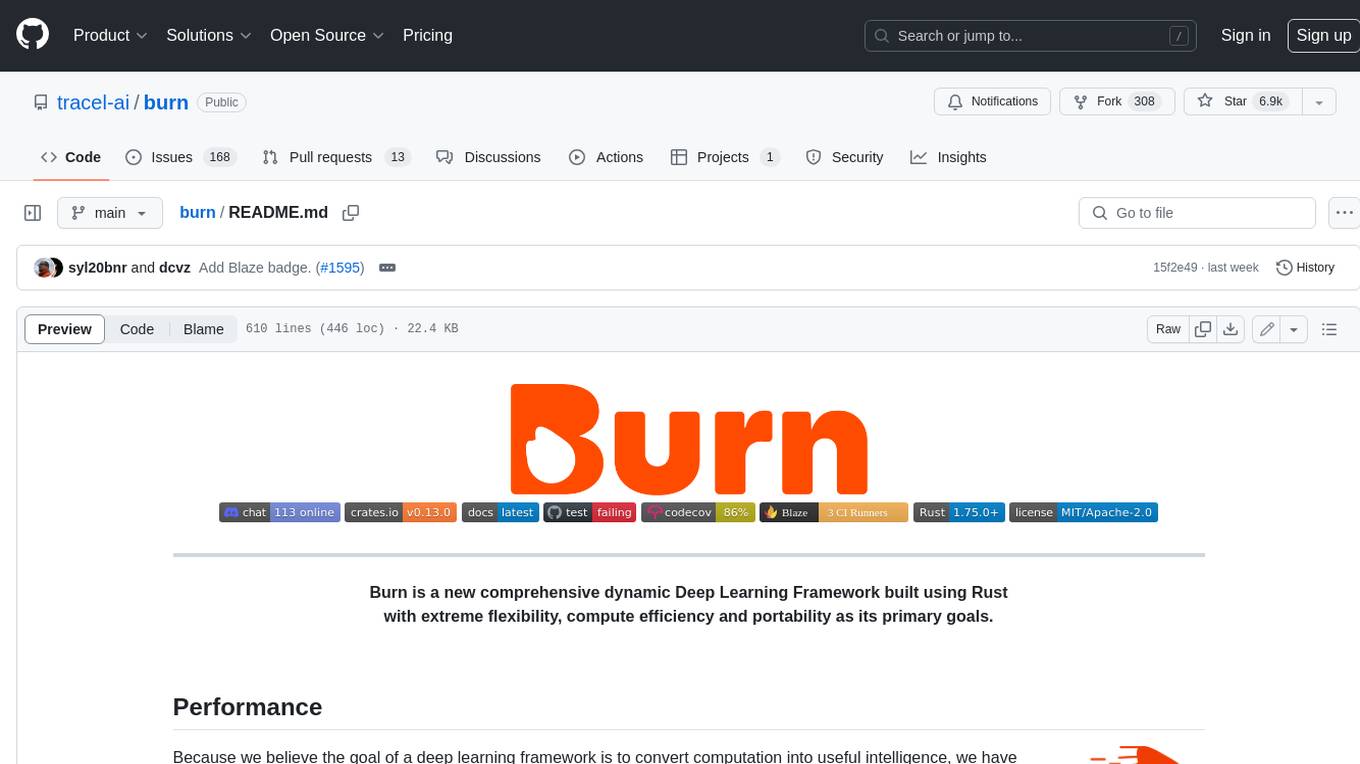
burn
Burn is a new comprehensive dynamic Deep Learning Framework built using Rust with extreme flexibility, compute efficiency and portability as its primary goals.
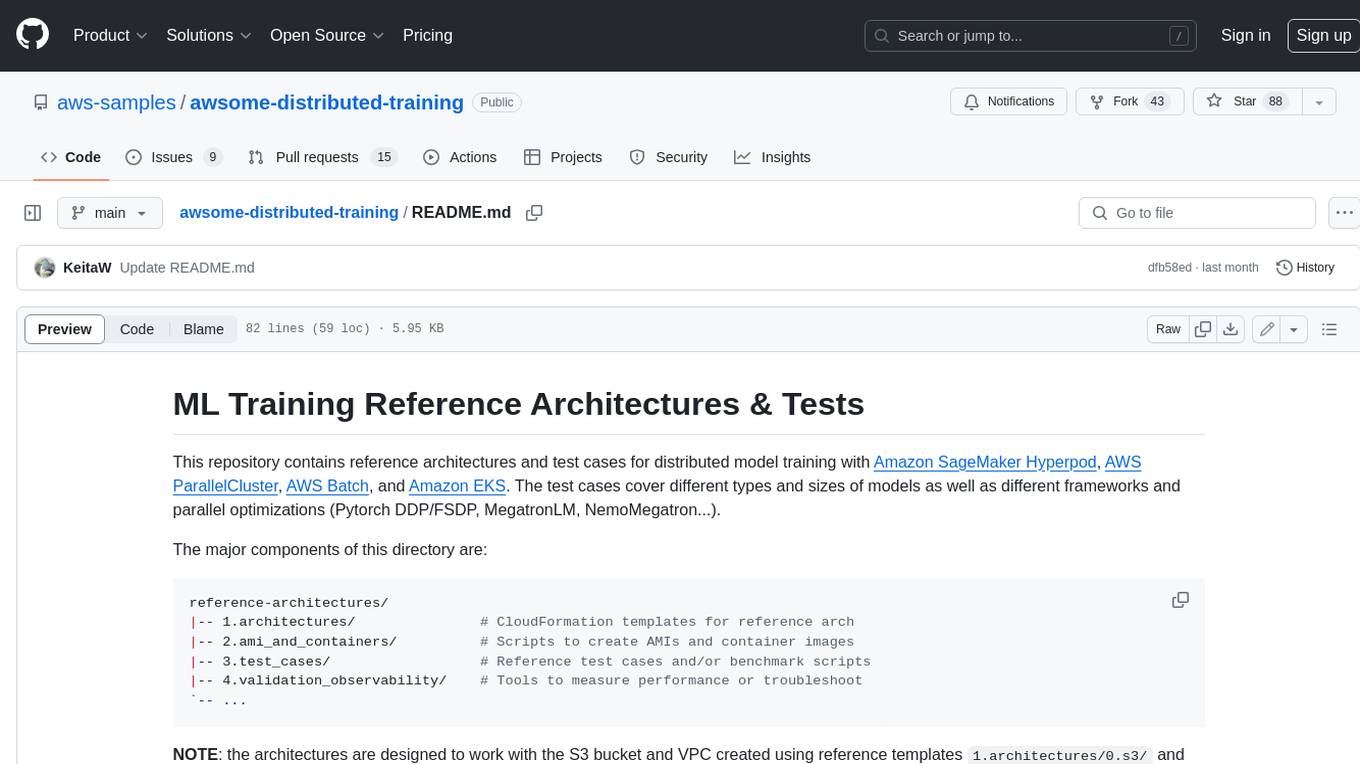
awsome-distributed-training
This repository contains reference architectures and test cases for distributed model training with Amazon SageMaker Hyperpod, AWS ParallelCluster, AWS Batch, and Amazon EKS. The test cases cover different types and sizes of models as well as different frameworks and parallel optimizations (Pytorch DDP/FSDP, MegatronLM, NemoMegatron...).
For similar jobs
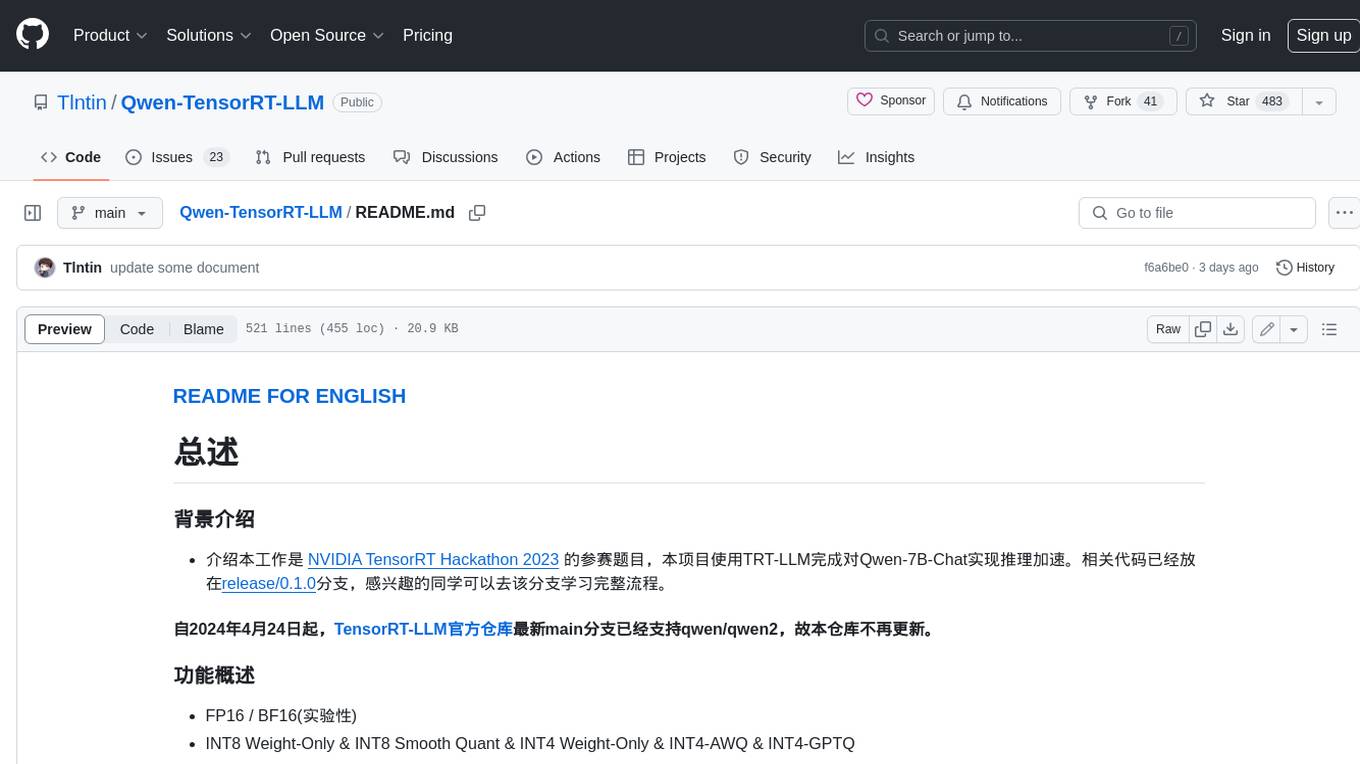
Qwen-TensorRT-LLM
Qwen-TensorRT-LLM is a project developed for the NVIDIA TensorRT Hackathon 2023, focusing on accelerating inference for the Qwen-7B-Chat model using TRT-LLM. The project offers various functionalities such as FP16/BF16 support, INT8 and INT4 quantization options, Tensor Parallel for multi-GPU parallelism, web demo setup with gradio, Triton API deployment for maximum throughput/concurrency, fastapi integration for openai requests, CLI interaction, and langchain support. It supports models like qwen2, qwen, and qwen-vl for both base and chat models. The project also provides tutorials on Bilibili and blogs for adapting Qwen models in NVIDIA TensorRT-LLM, along with hardware requirements and quick start guides for different model types and quantization methods.
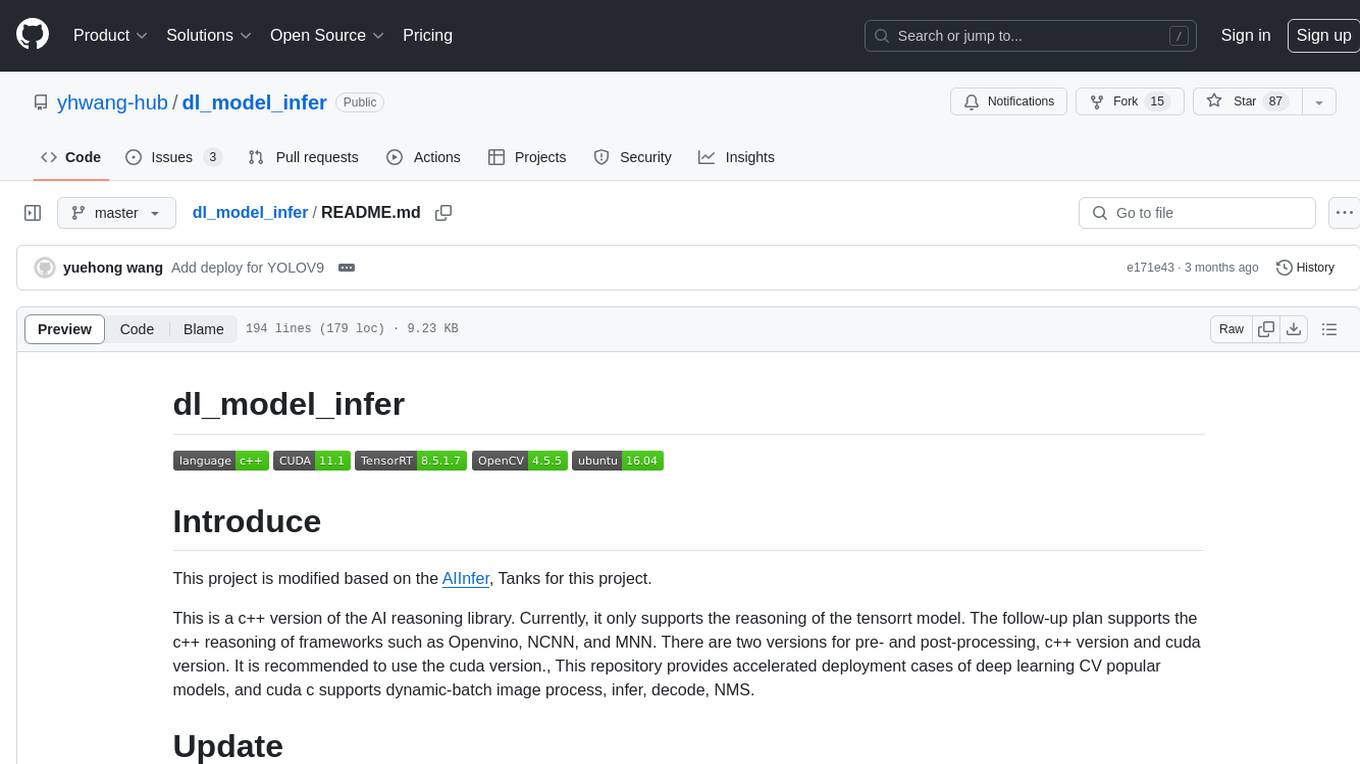
dl_model_infer
This project is a c++ version of the AI reasoning library that supports the reasoning of tensorrt models. It provides accelerated deployment cases of deep learning CV popular models and supports dynamic-batch image processing, inference, decode, and NMS. The project has been updated with various models and provides tutorials for model exports. It also includes a producer-consumer inference model for specific tasks. The project directory includes implementations for model inference applications, backend reasoning classes, post-processing, pre-processing, and target detection and tracking. Speed tests have been conducted on various models, and onnx downloads are available for different models.
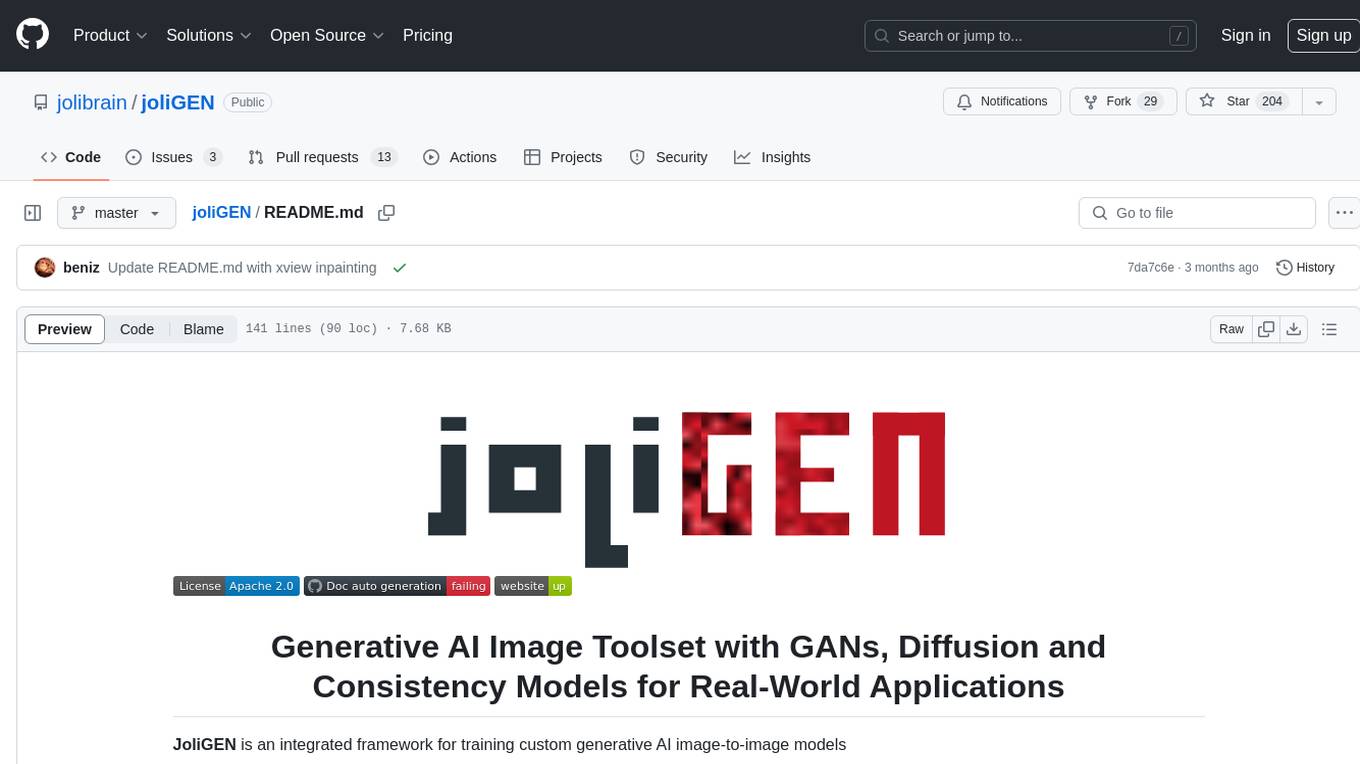
joliGEN
JoliGEN is an integrated framework for training custom generative AI image-to-image models. It implements GAN, Diffusion, and Consistency models for various image translation tasks, including domain and style adaptation with conservation of semantics. The tool is designed for real-world applications such as Controlled Image Generation, Augmented Reality, Dataset Smart Augmentation, and Synthetic to Real transforms. JoliGEN allows for fast and stable training with a REST API server for simplified deployment. It offers a wide range of options and parameters with detailed documentation available for models, dataset formats, and data augmentation.
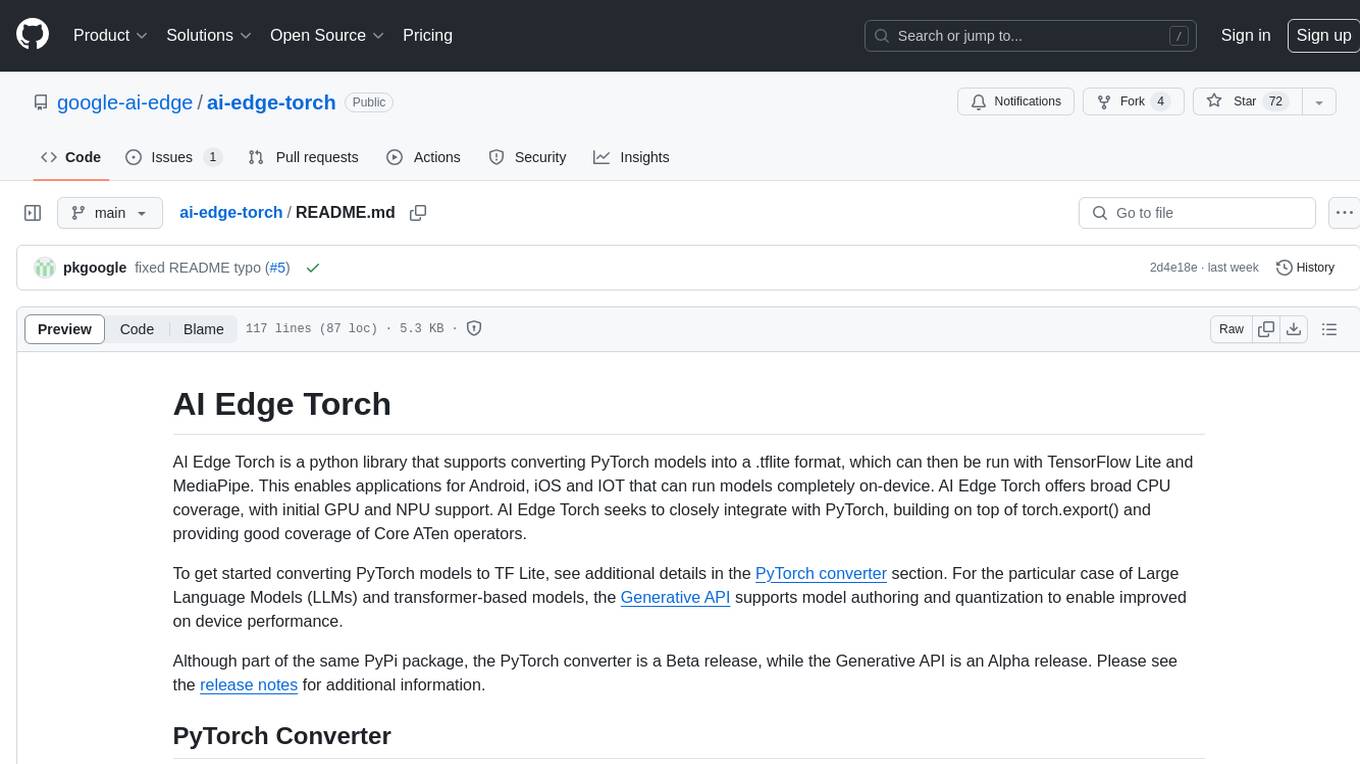
ai-edge-torch
AI Edge Torch is a Python library that supports converting PyTorch models into a .tflite format for on-device applications on Android, iOS, and IoT devices. It offers broad CPU coverage with initial GPU and NPU support, closely integrating with PyTorch and providing good coverage of Core ATen operators. The library includes a PyTorch converter for model conversion and a Generative API for authoring mobile-optimized PyTorch Transformer models, enabling easy deployment of Large Language Models (LLMs) on mobile devices.
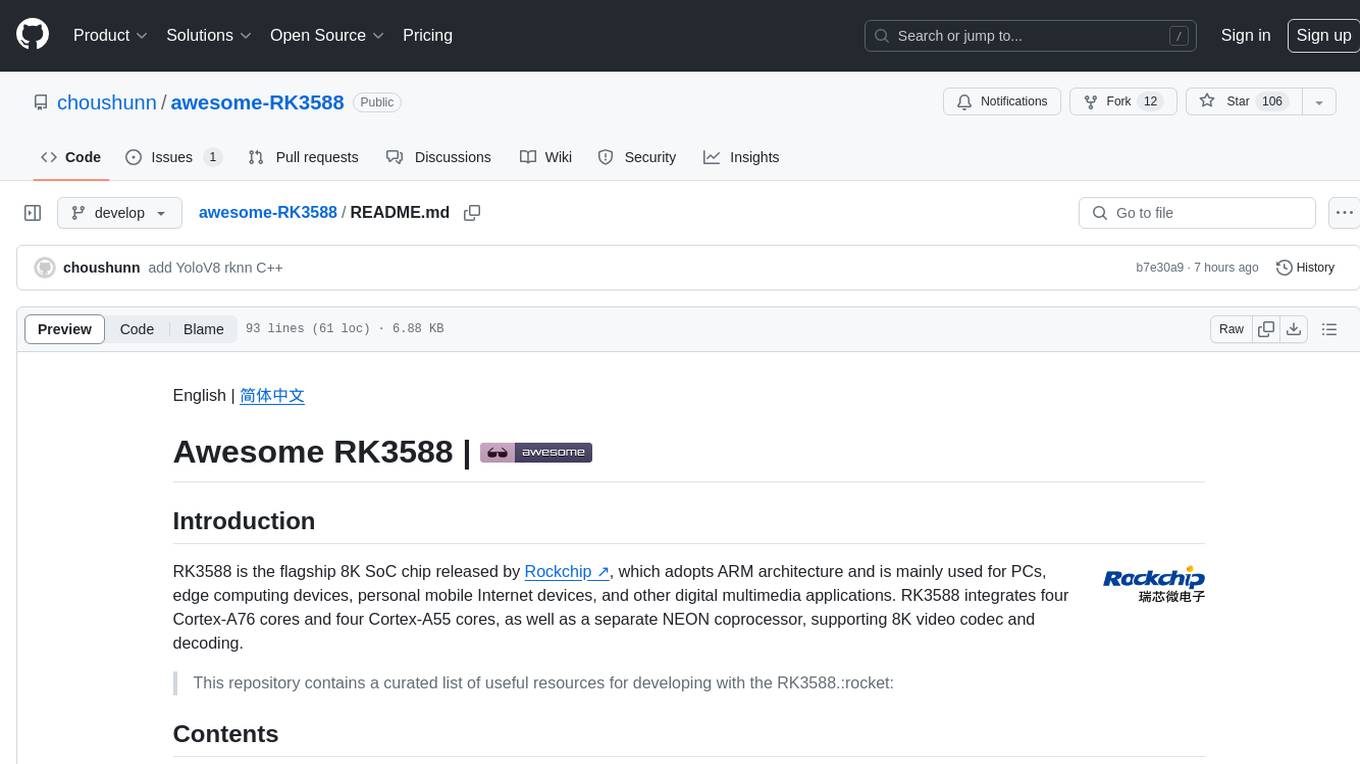
awesome-RK3588
RK3588 is a flagship 8K SoC chip by Rockchip, integrating Cortex-A76 and Cortex-A55 cores with NEON coprocessor for 8K video codec. This repository curates resources for developing with RK3588, including official resources, RKNN models, projects, development boards, documentation, tools, and sample code.
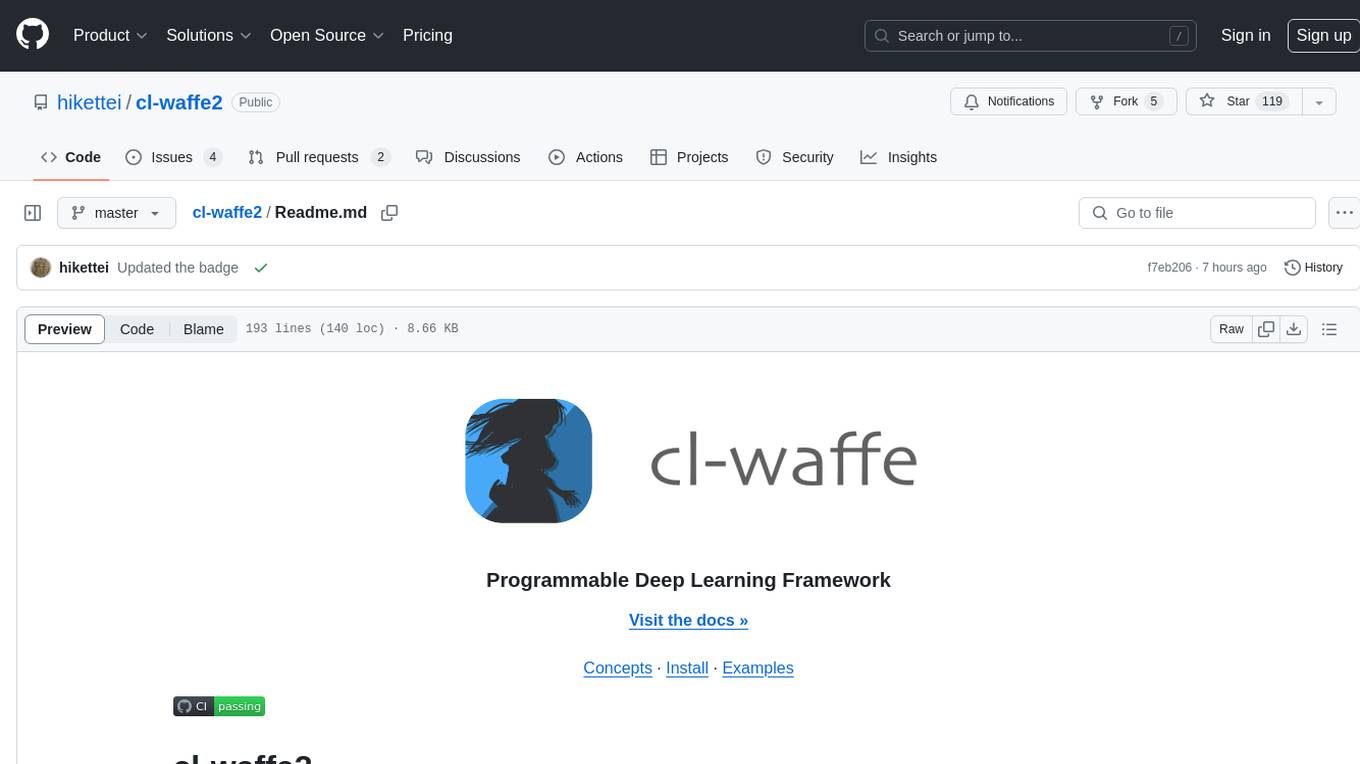
cl-waffe2
cl-waffe2 is an experimental deep learning framework in Common Lisp, providing fast, systematic, and customizable matrix operations, reverse mode tape-based Automatic Differentiation, and neural network model building and training features accelerated by a JIT Compiler. It offers abstraction layers, extensibility, inlining, graph-level optimization, visualization, debugging, systematic nodes, and symbolic differentiation. Users can easily write extensions and optimize their networks without overheads. The framework is designed to eliminate barriers between users and developers, allowing for easy customization and extension.
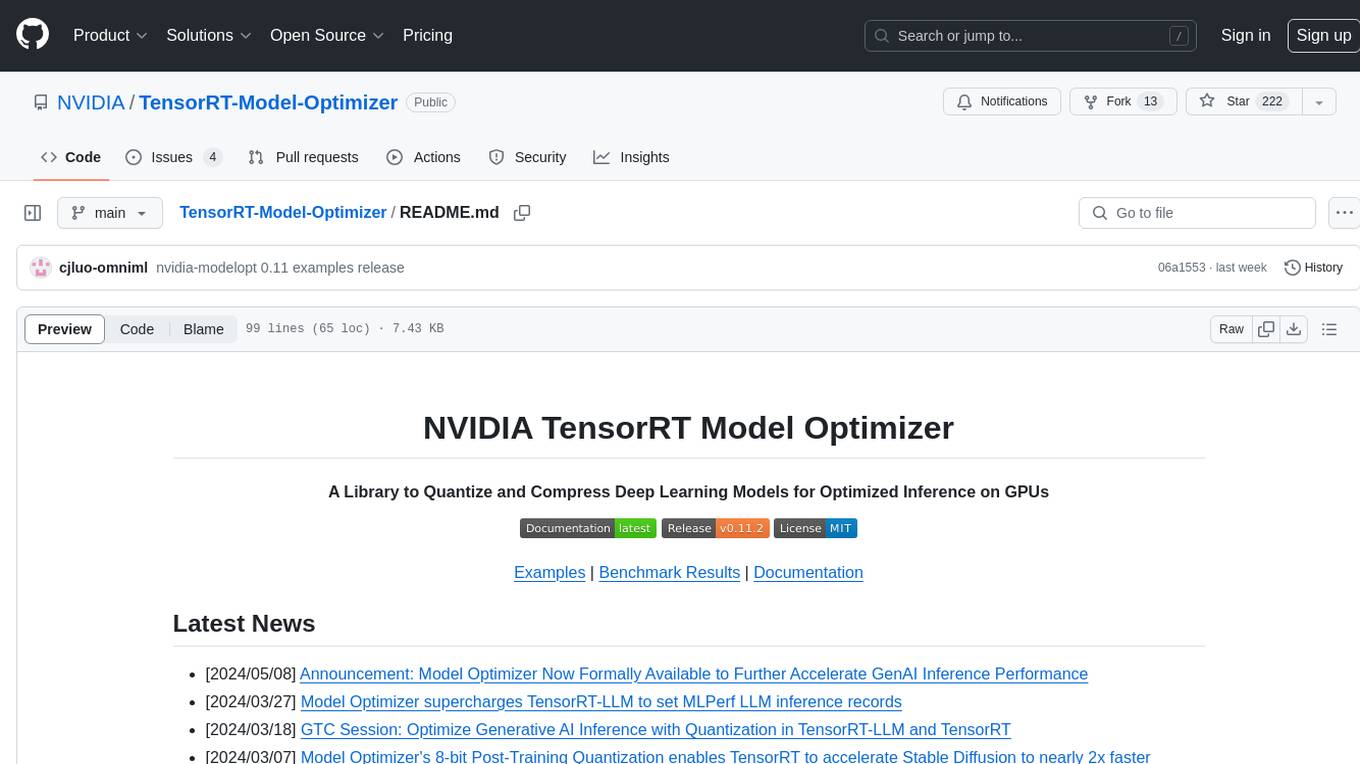
TensorRT-Model-Optimizer
The NVIDIA TensorRT Model Optimizer is a library designed to quantize and compress deep learning models for optimized inference on GPUs. It offers state-of-the-art model optimization techniques including quantization and sparsity to reduce inference costs for generative AI models. Users can easily stack different optimization techniques to produce quantized checkpoints from torch or ONNX models. The quantized checkpoints are ready for deployment in inference frameworks like TensorRT-LLM or TensorRT, with planned integrations for NVIDIA NeMo and Megatron-LM. The tool also supports 8-bit quantization with Stable Diffusion for enterprise users on NVIDIA NIM. Model Optimizer is available for free on NVIDIA PyPI, and this repository serves as a platform for sharing examples, GPU-optimized recipes, and collecting community feedback.
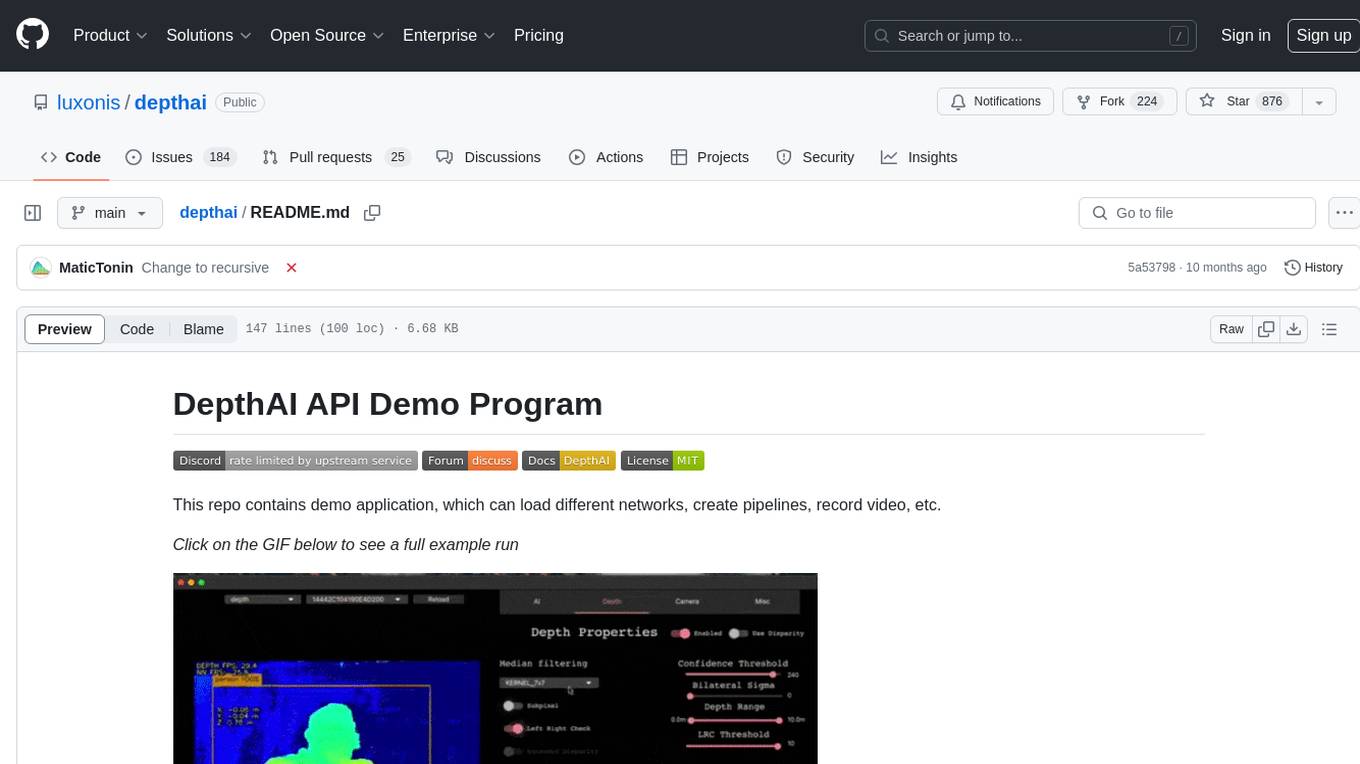
depthai
This repository contains a demo application for DepthAI, a tool that can load different networks, create pipelines, record video, and more. It provides documentation for installation and usage, including running programs through Docker. Users can explore DepthAI features via command line arguments or a clickable QT interface. Supported models include various AI models for tasks like face detection, human pose estimation, and object detection. The tool collects anonymous usage statistics by default, which can be disabled. Users can report issues to the development team for support and troubleshooting.















